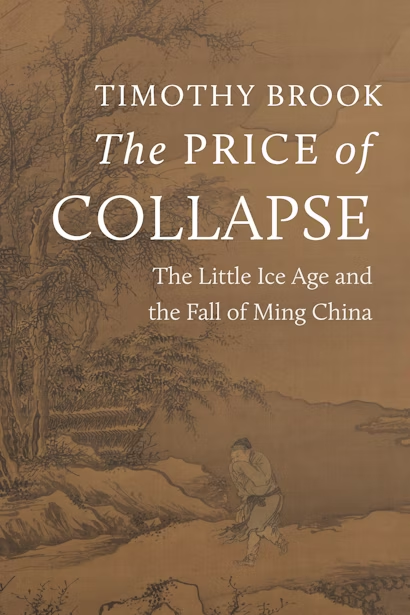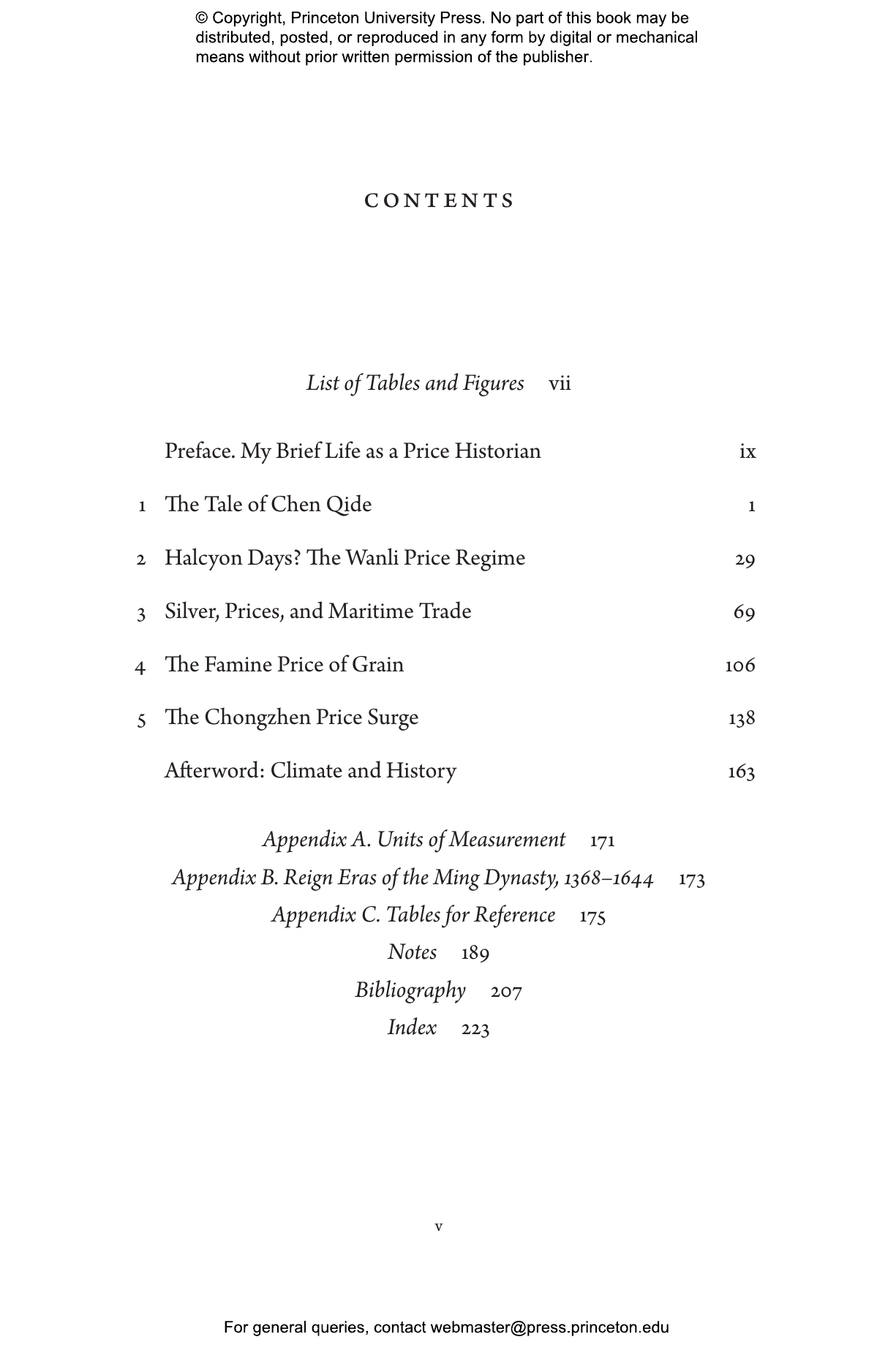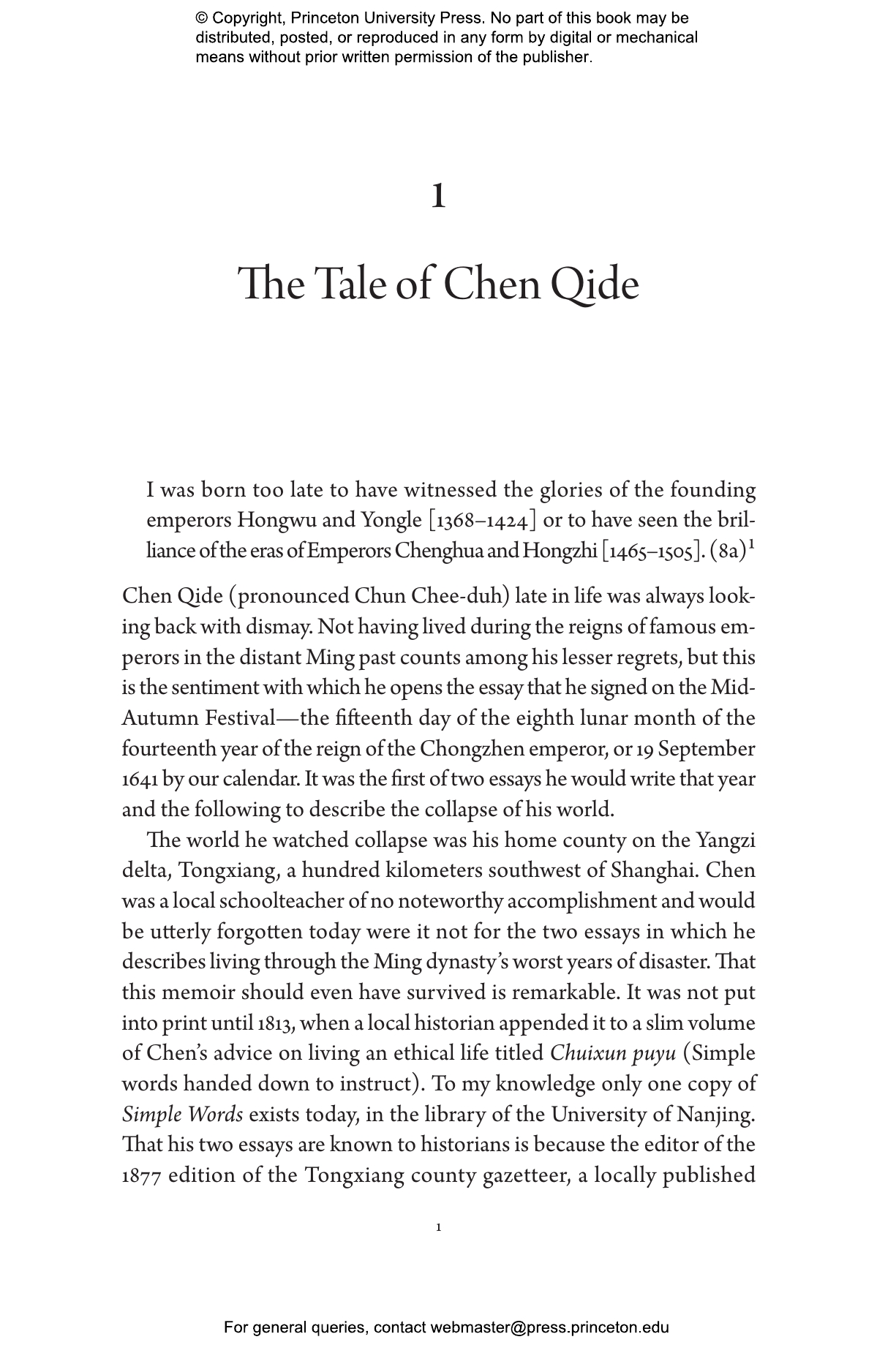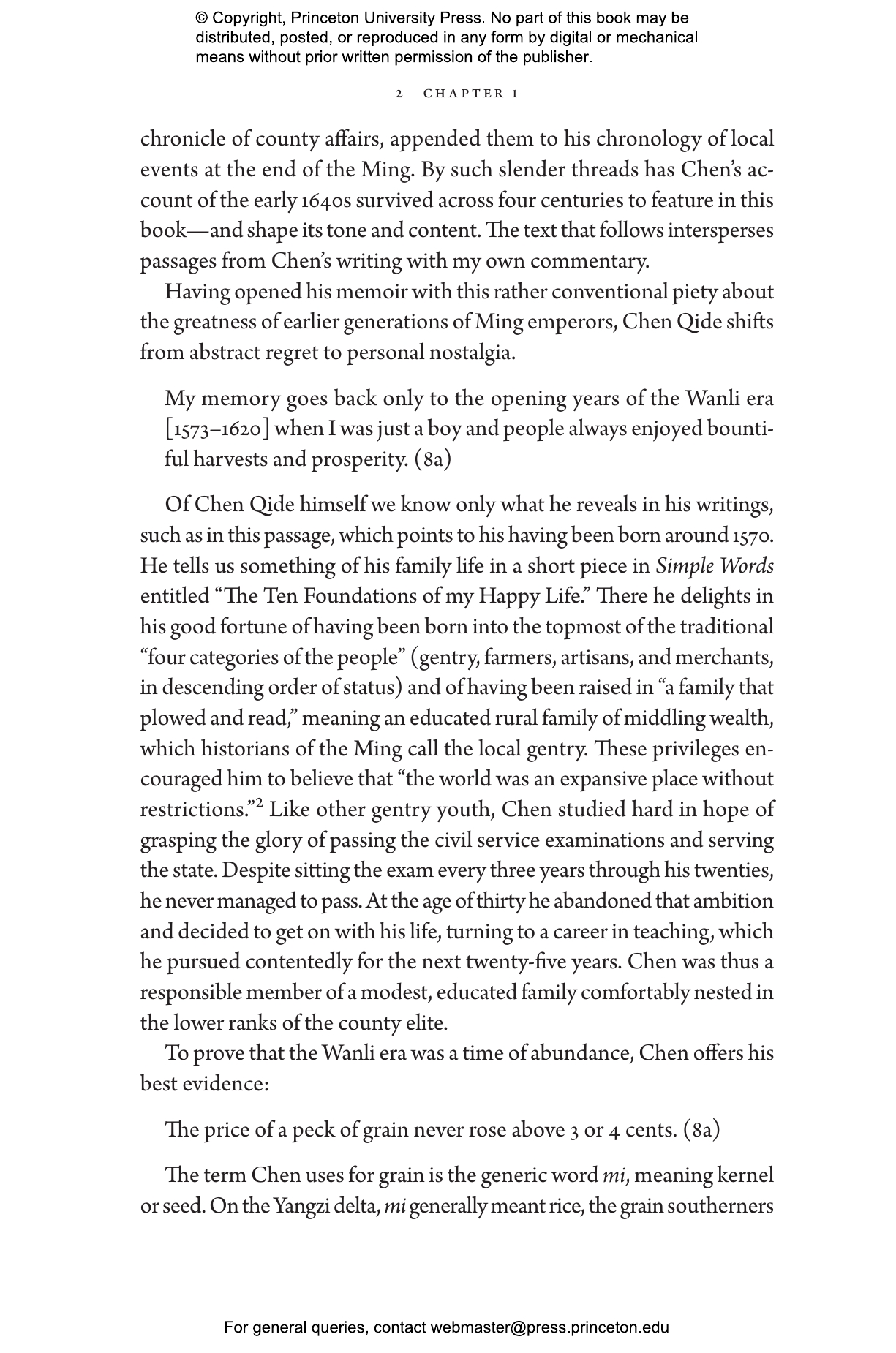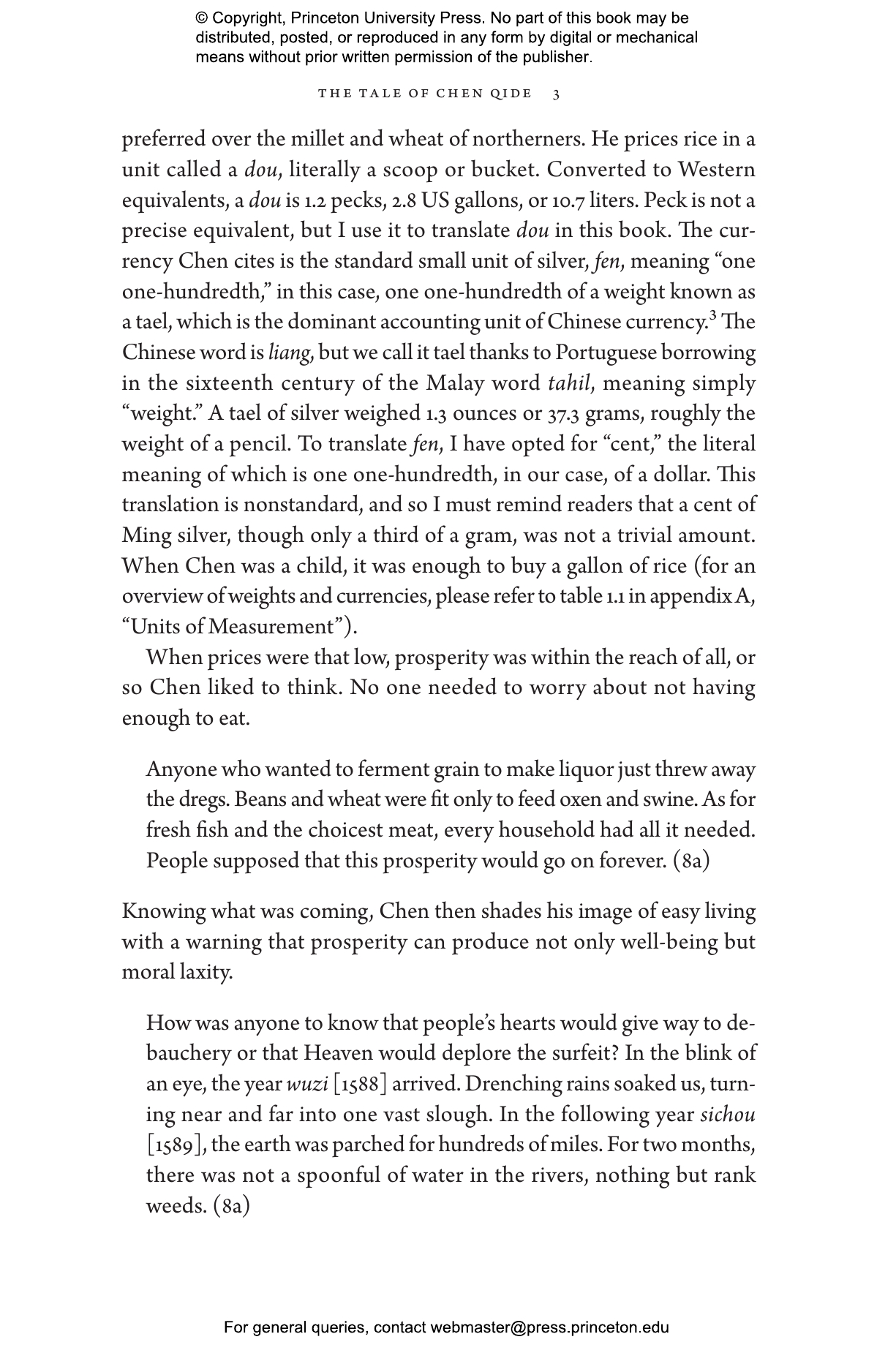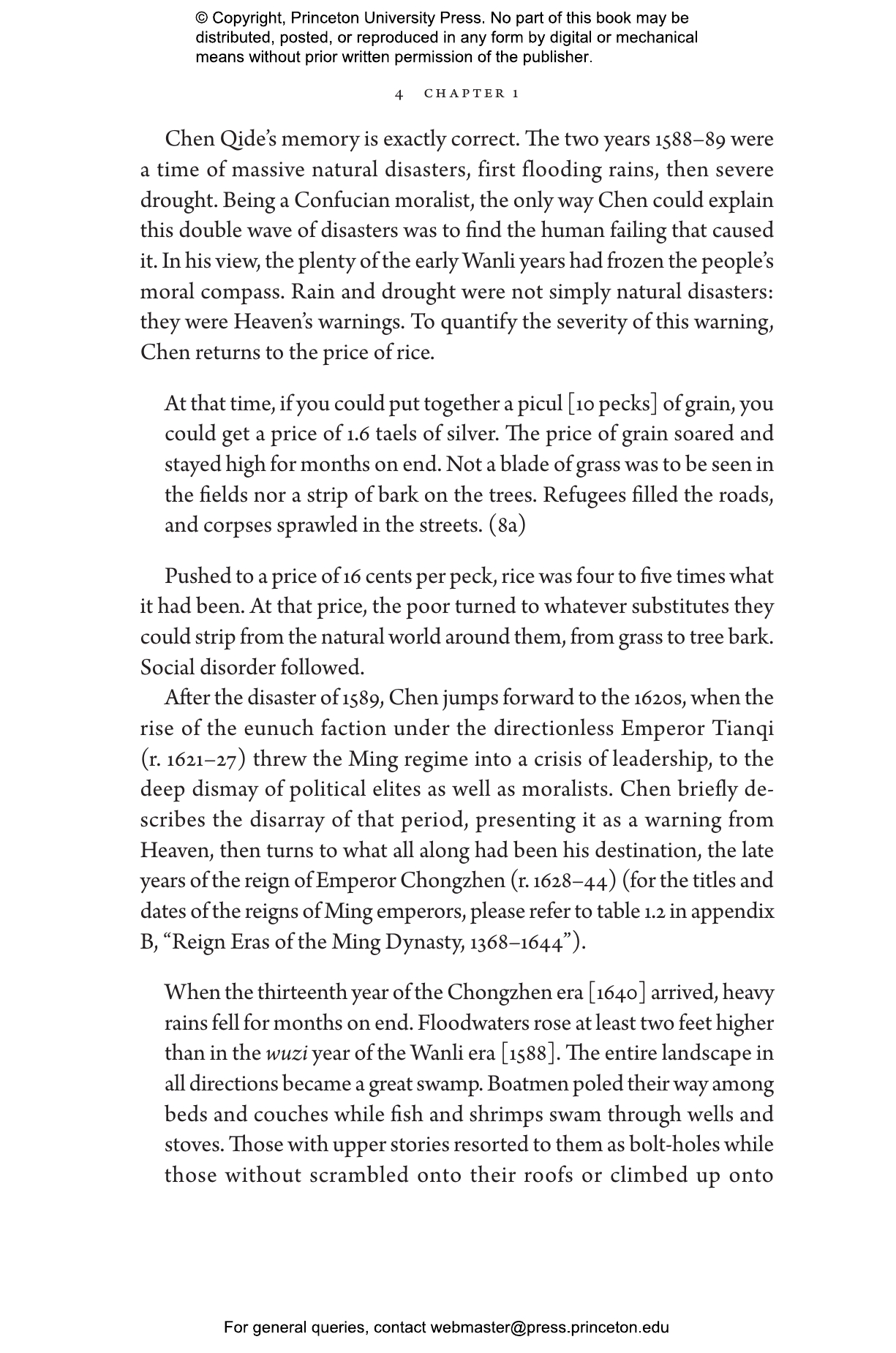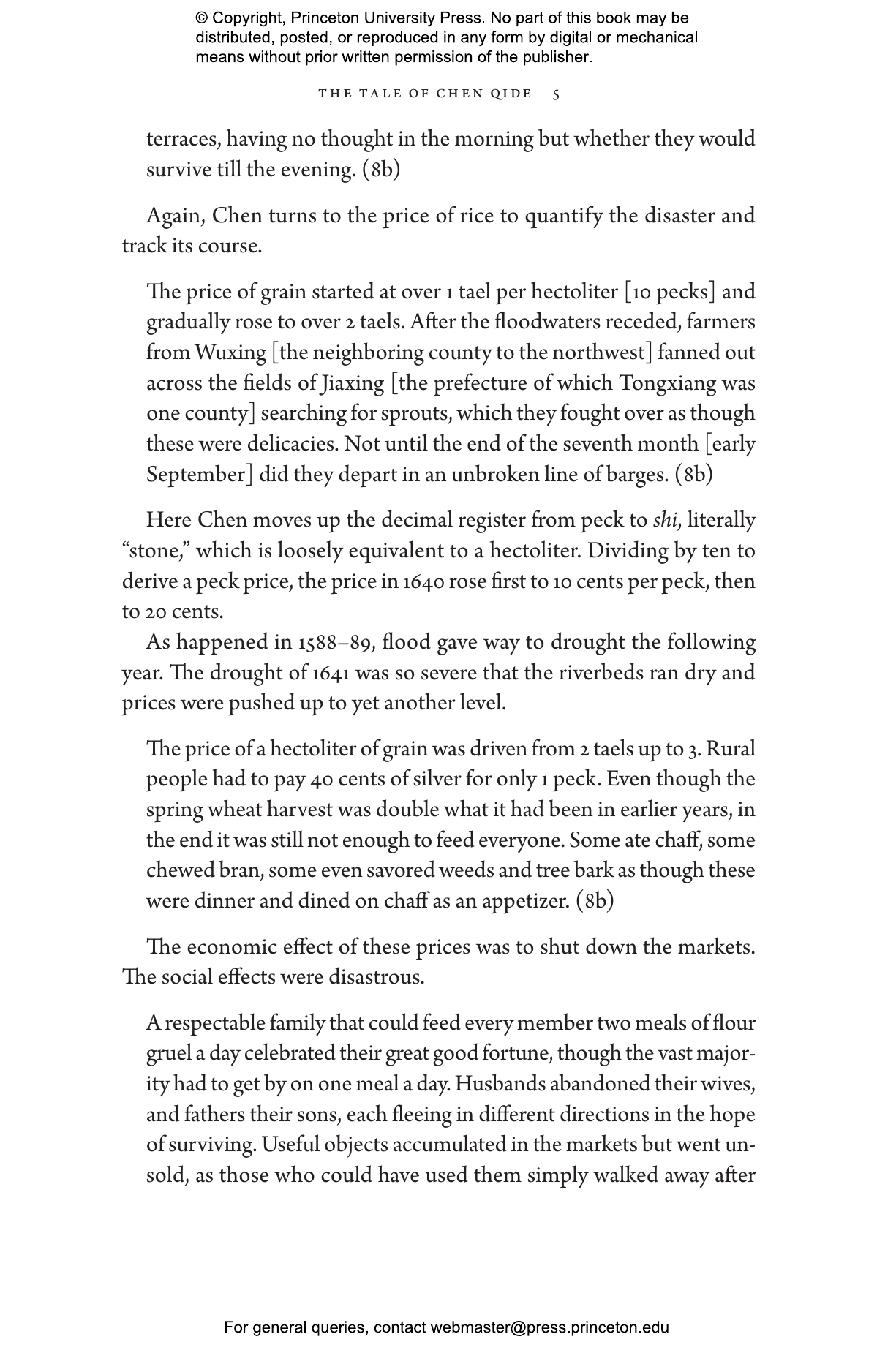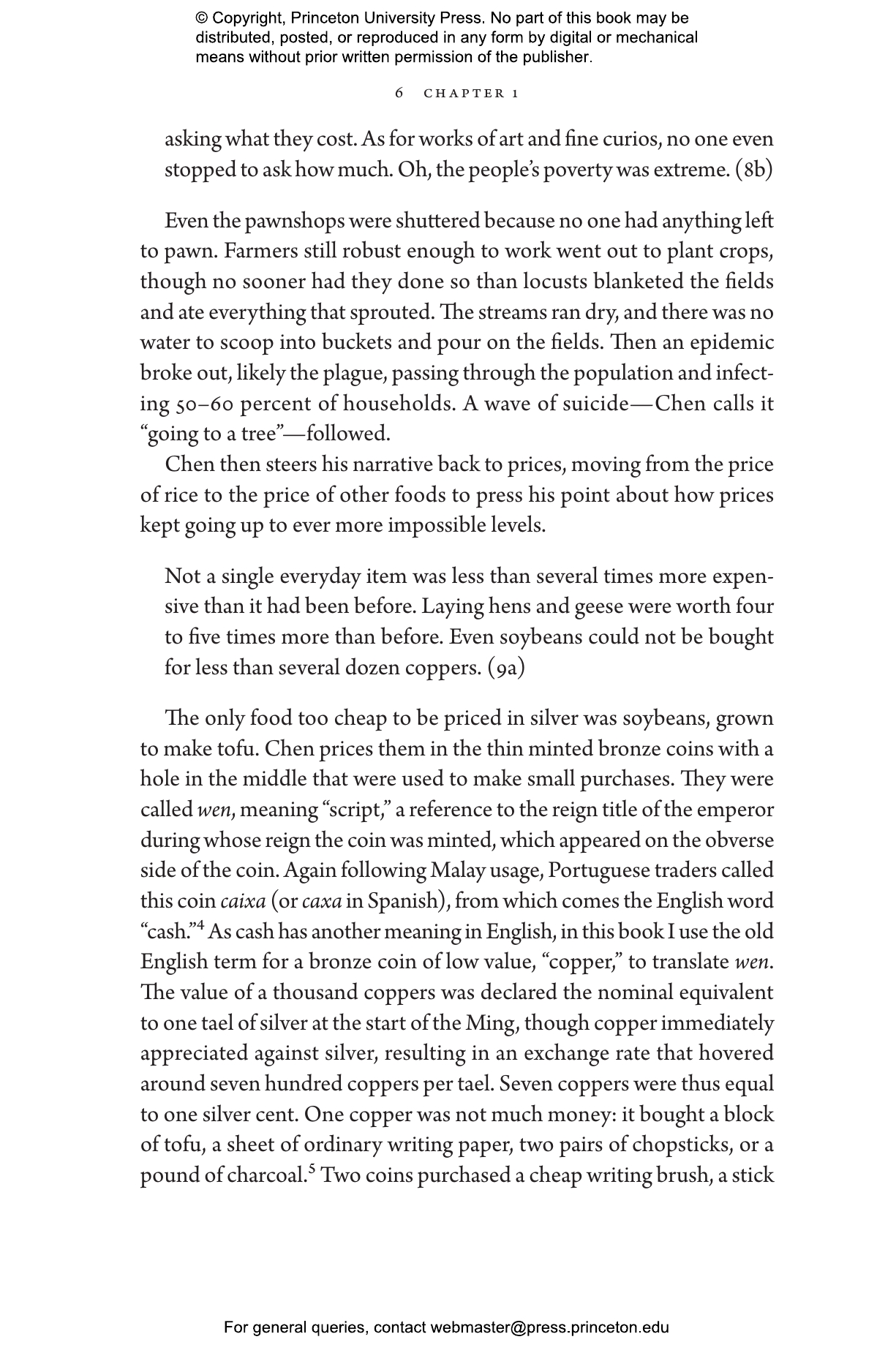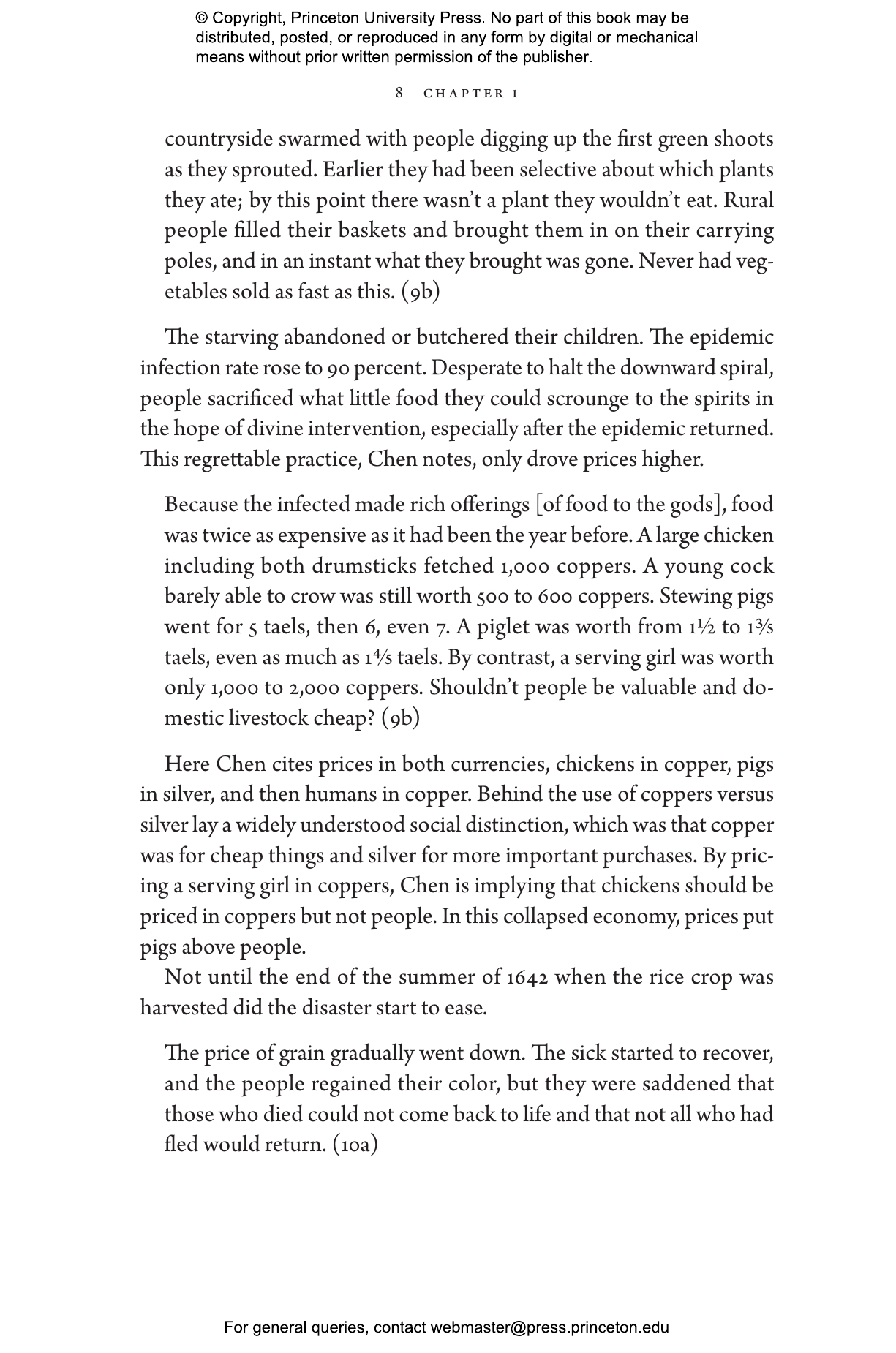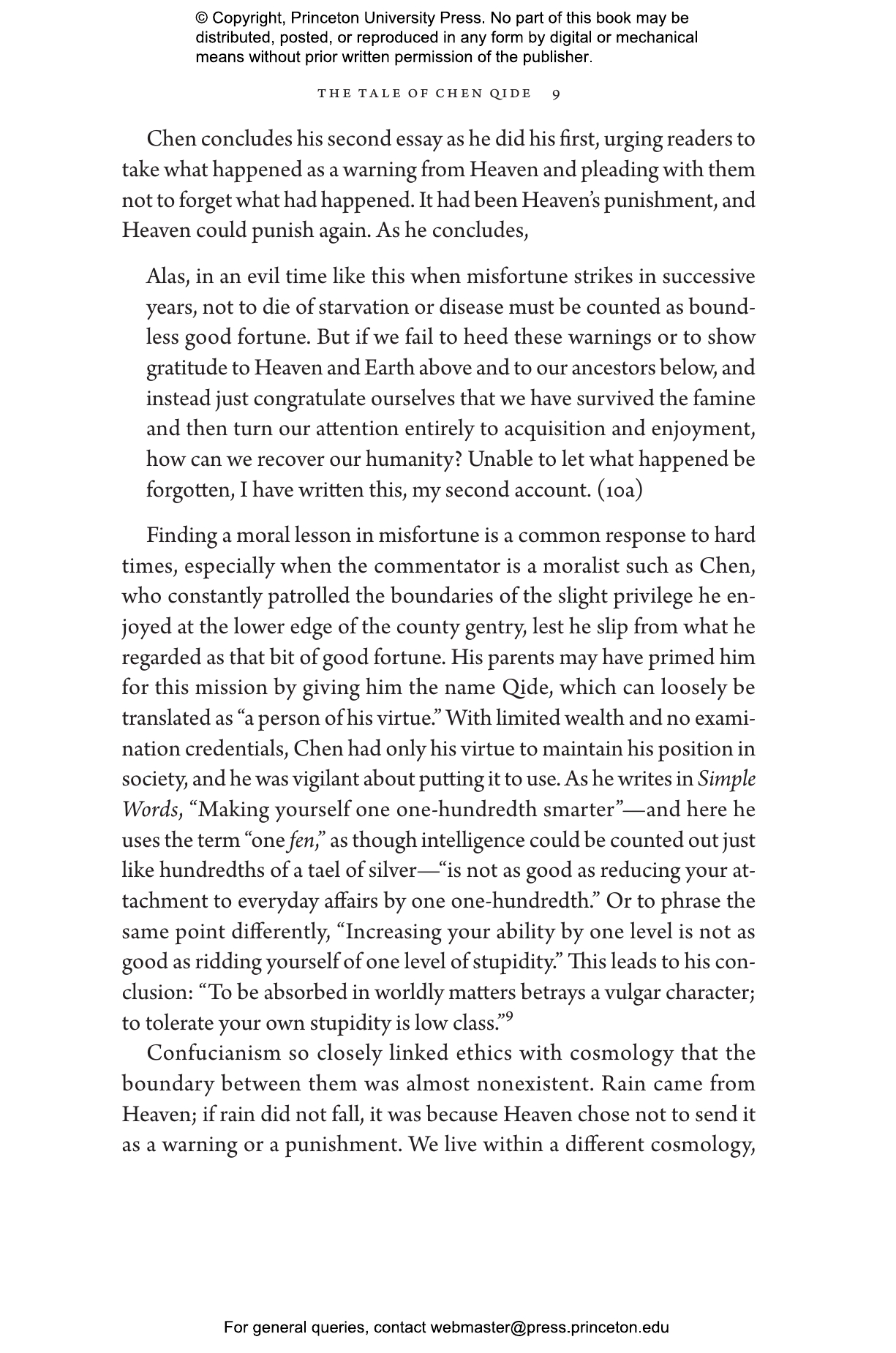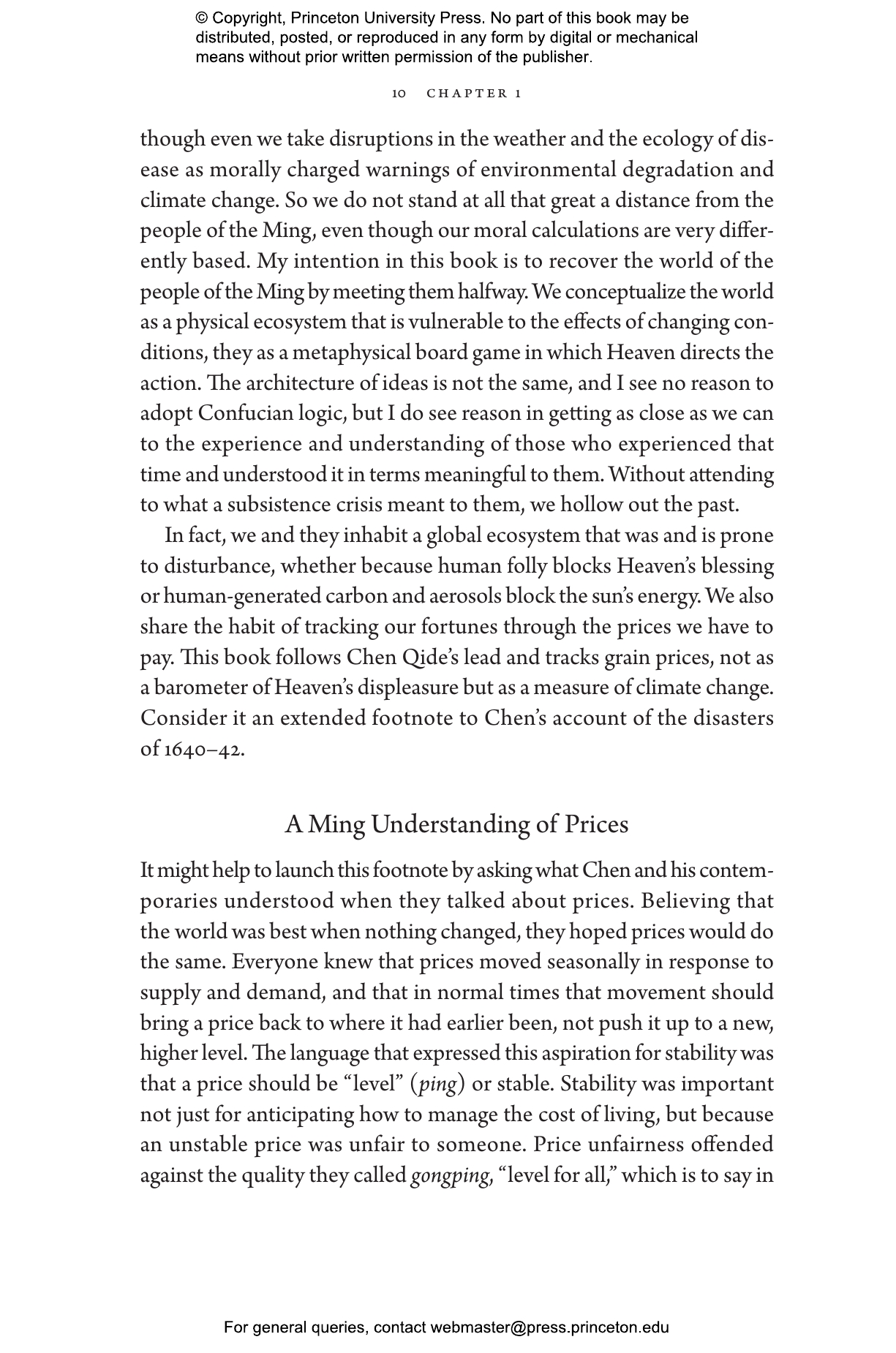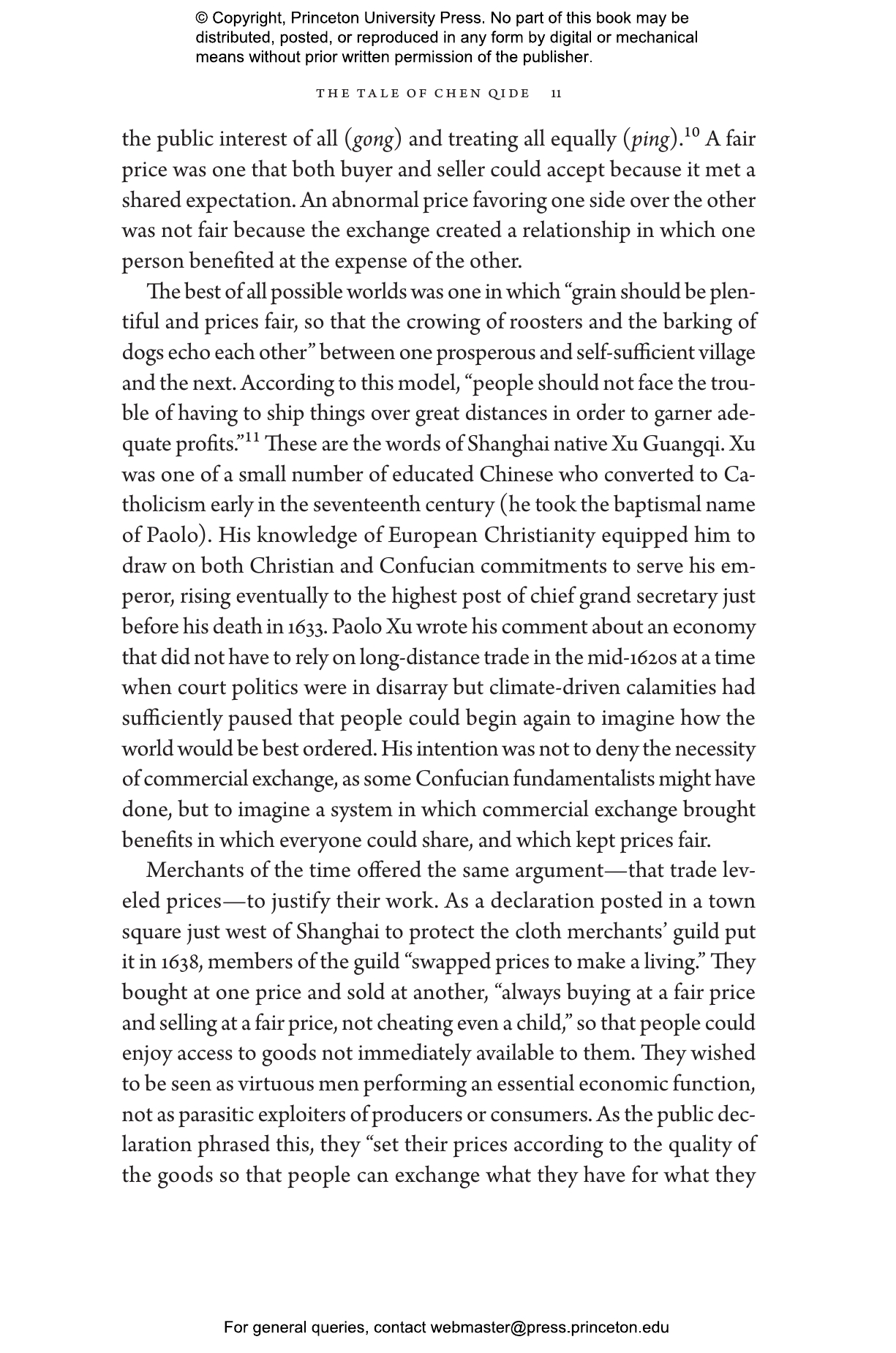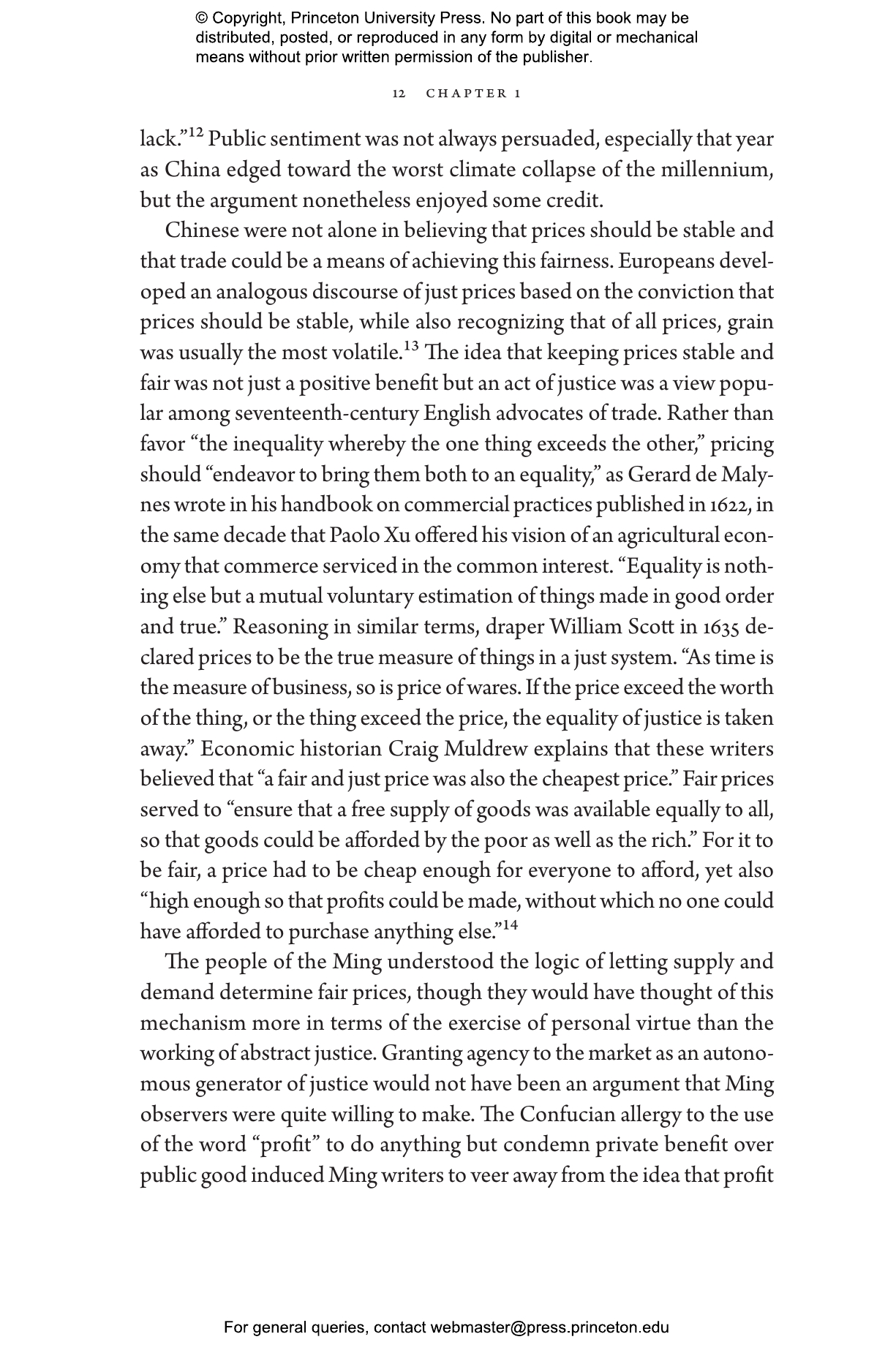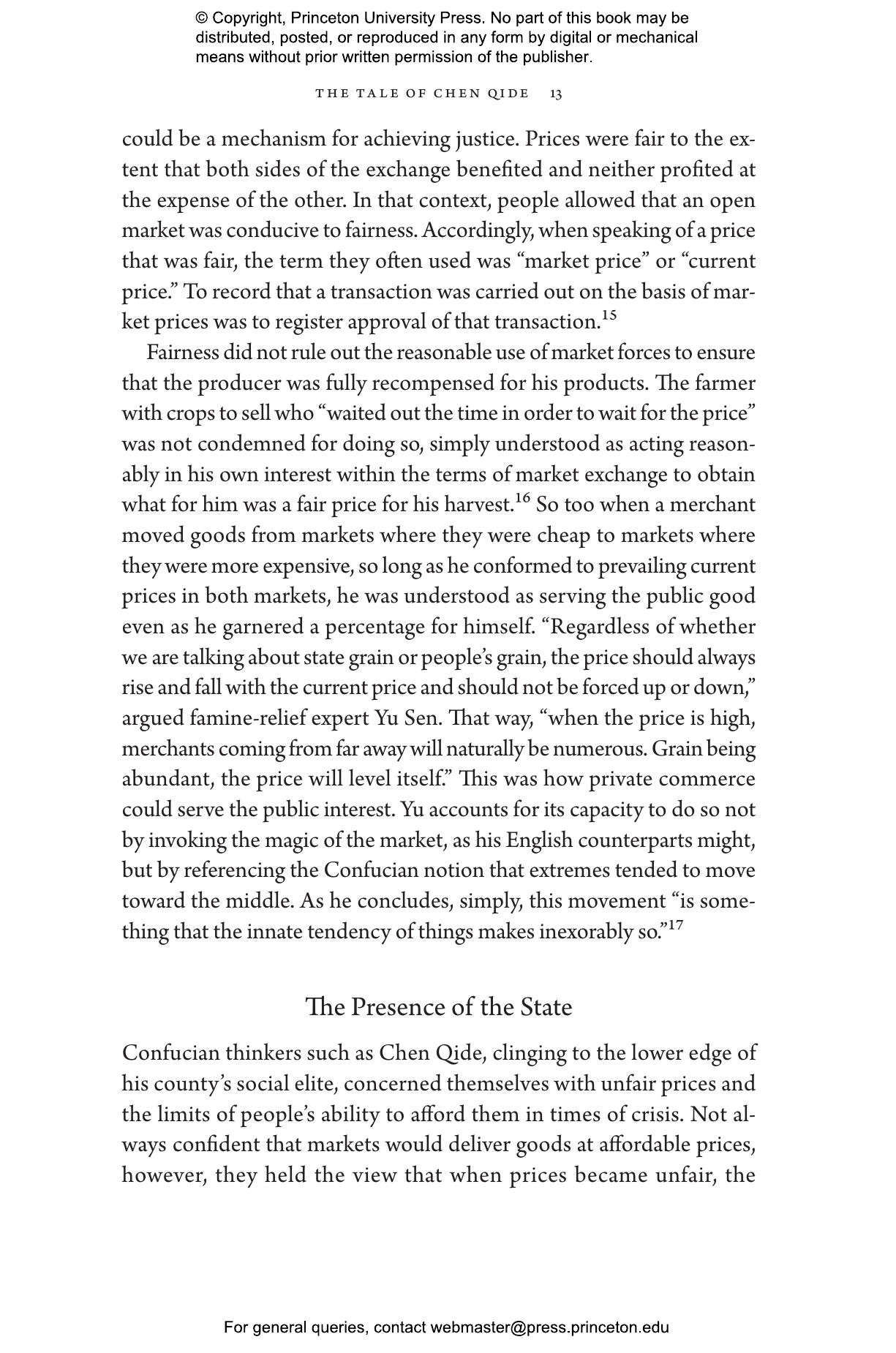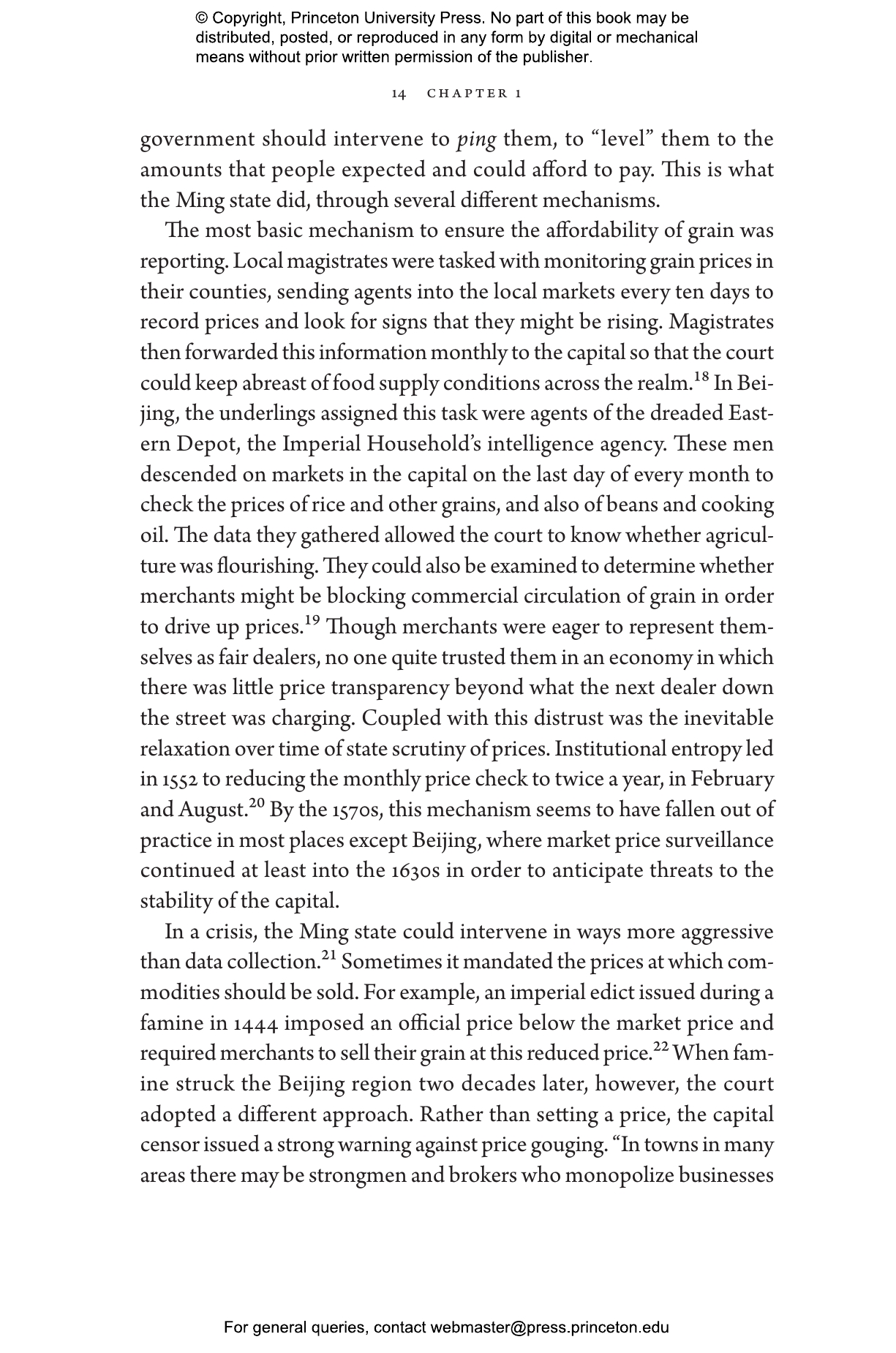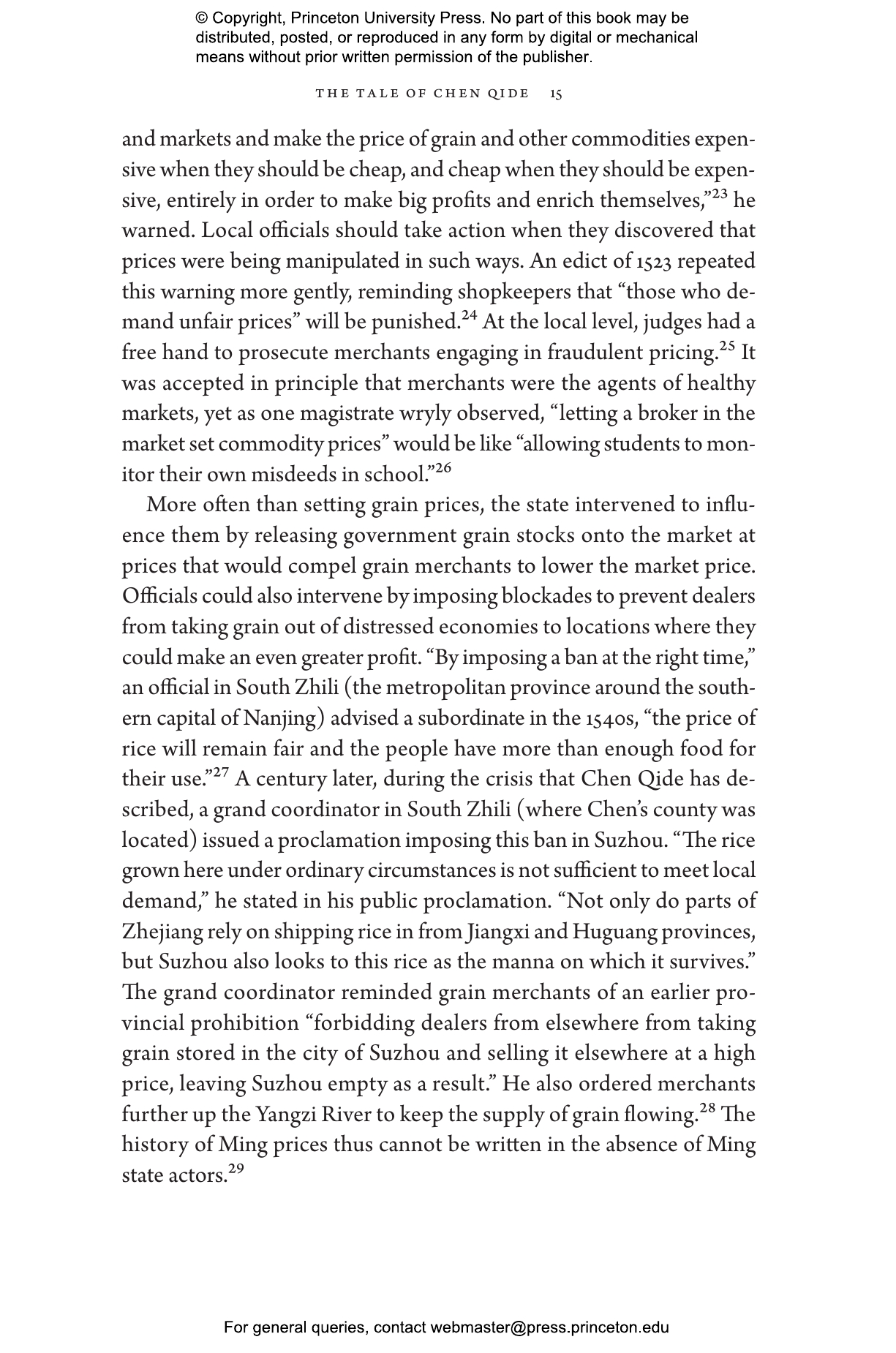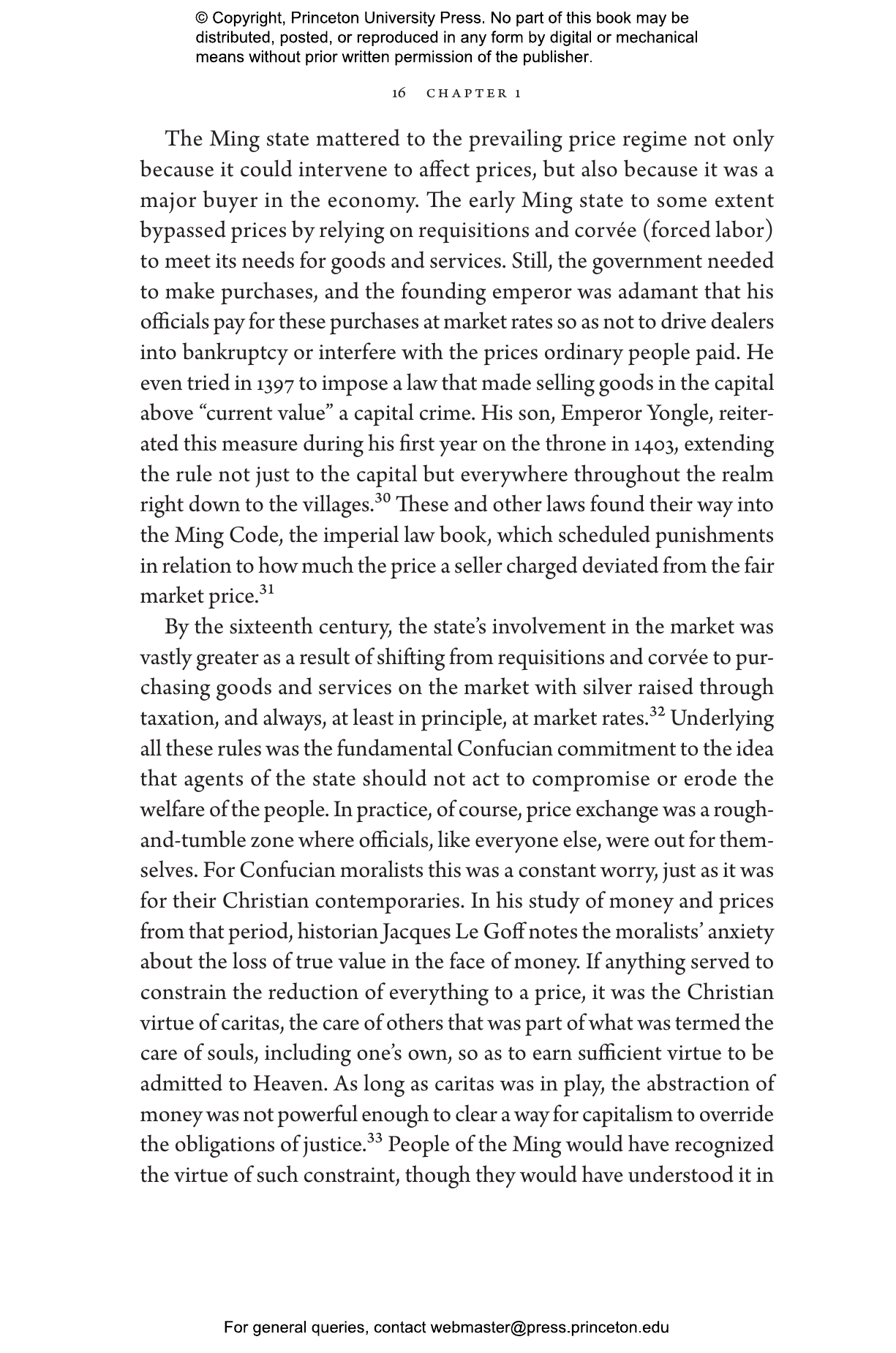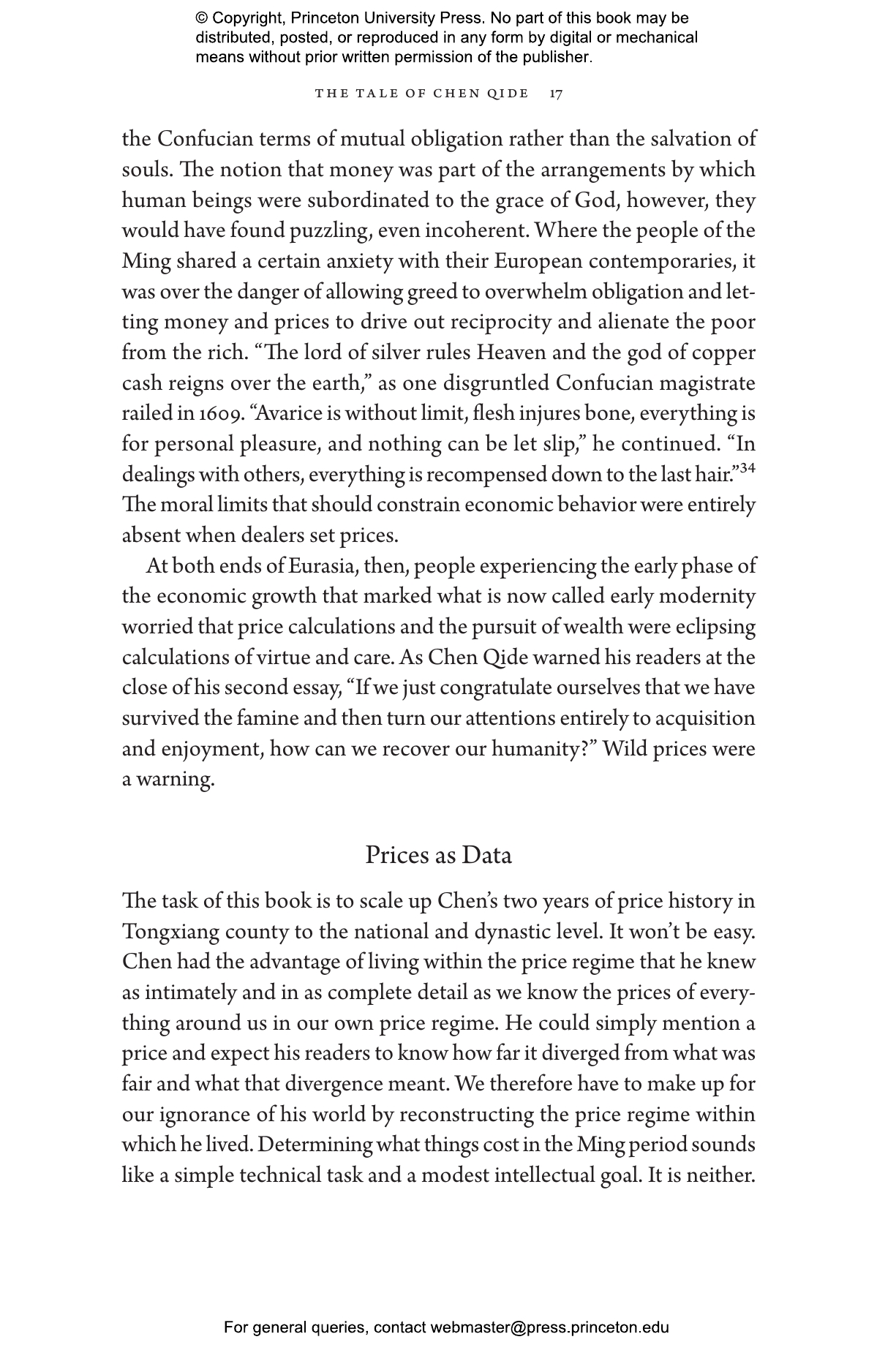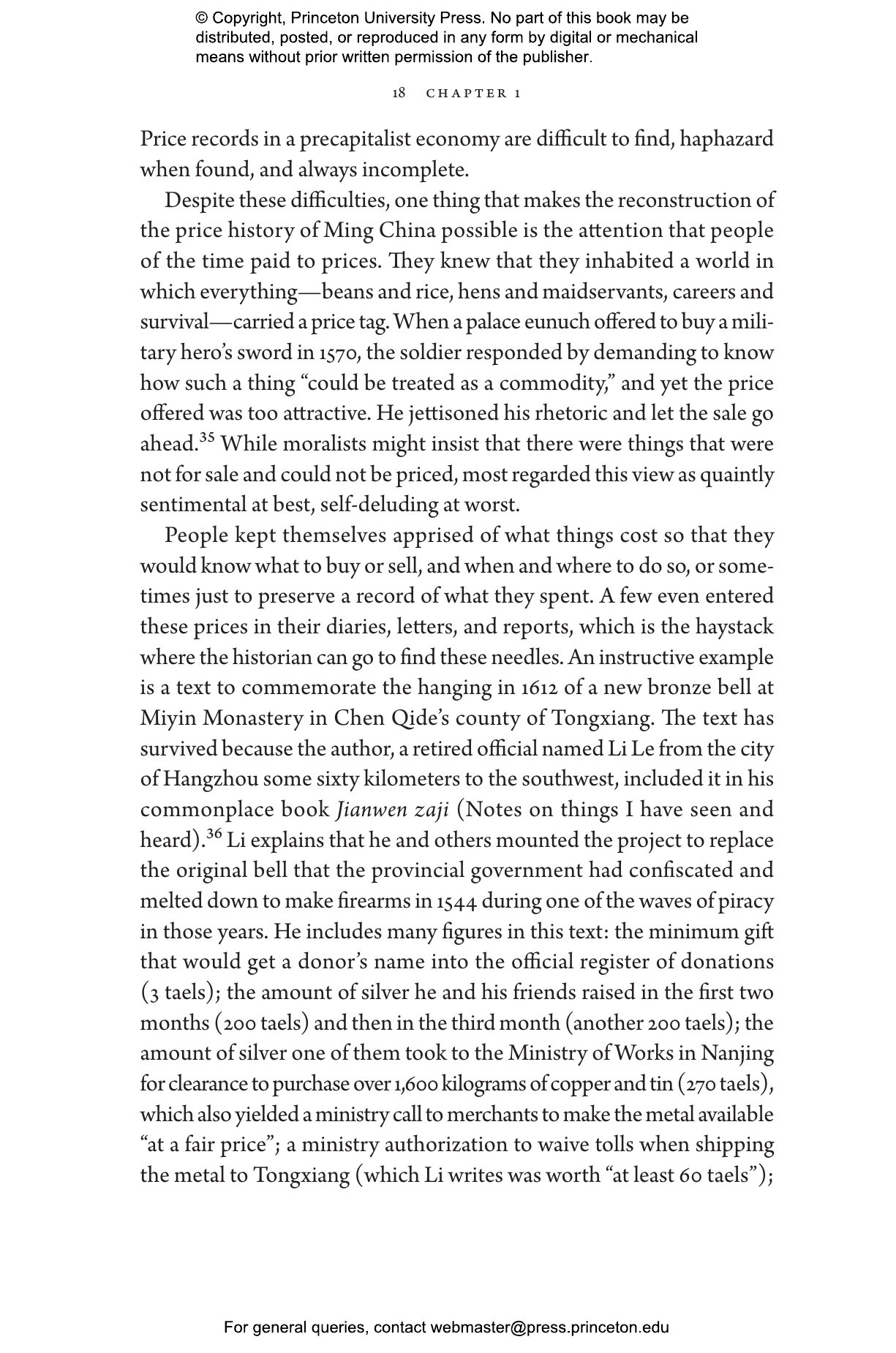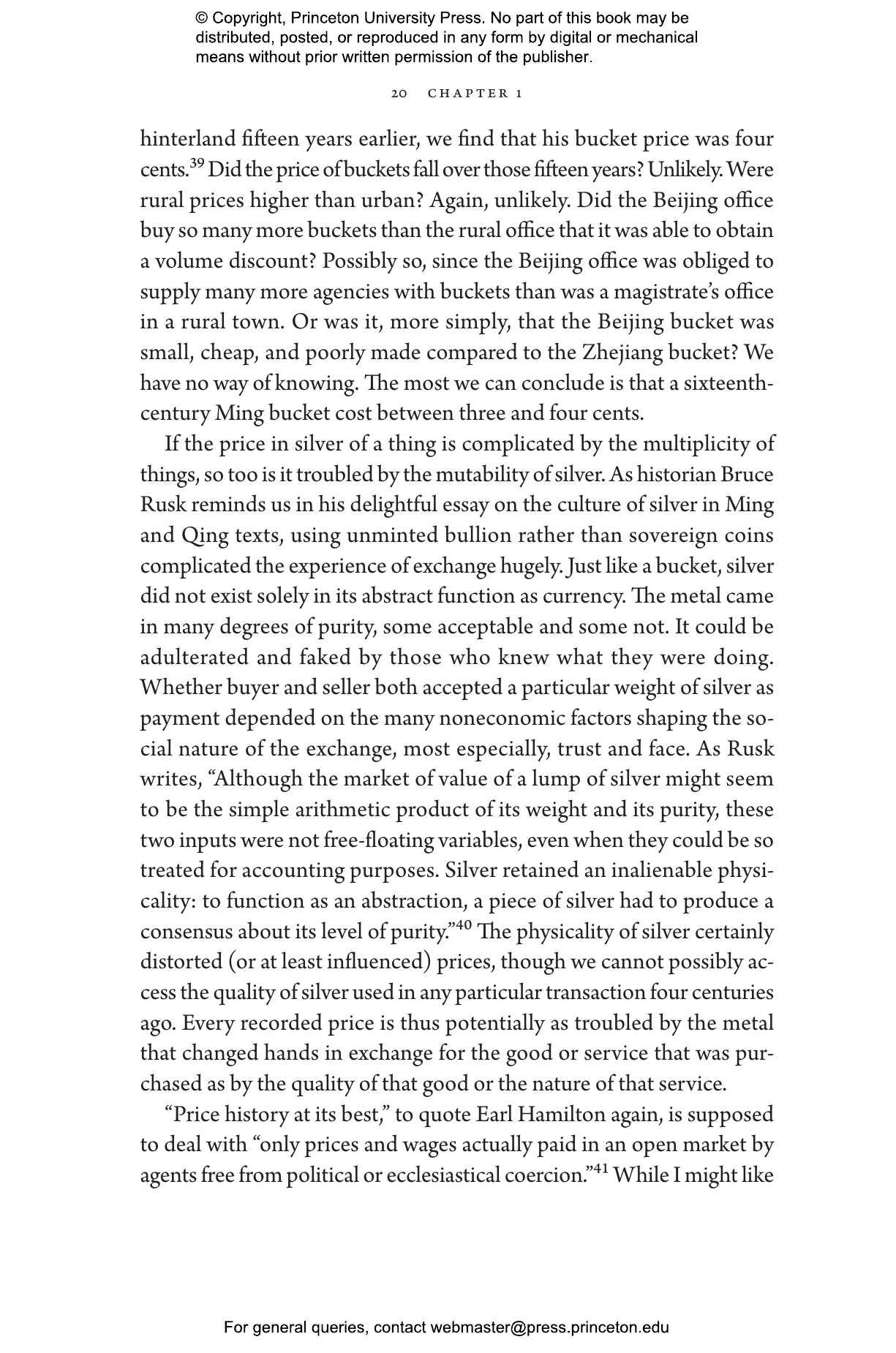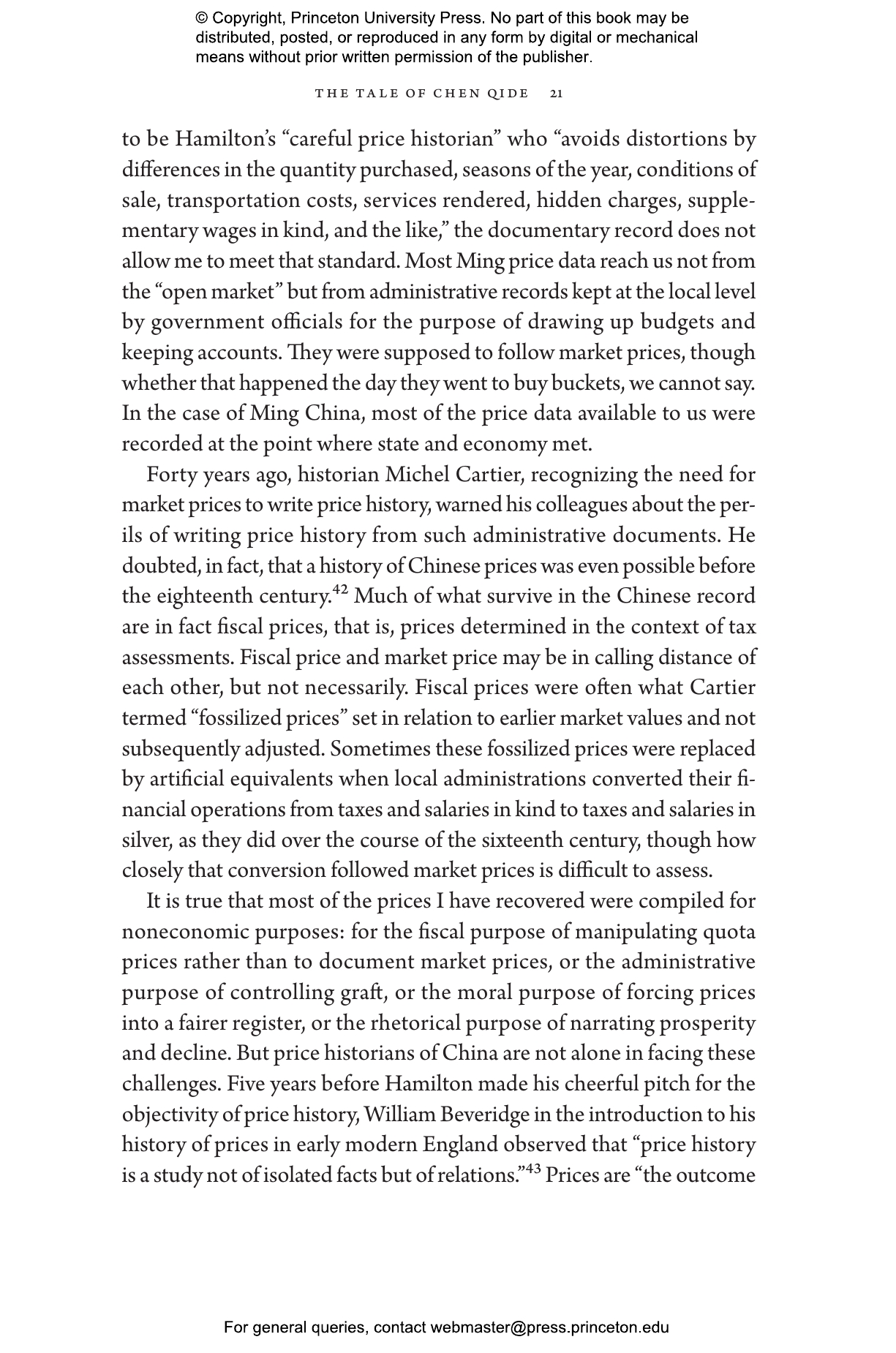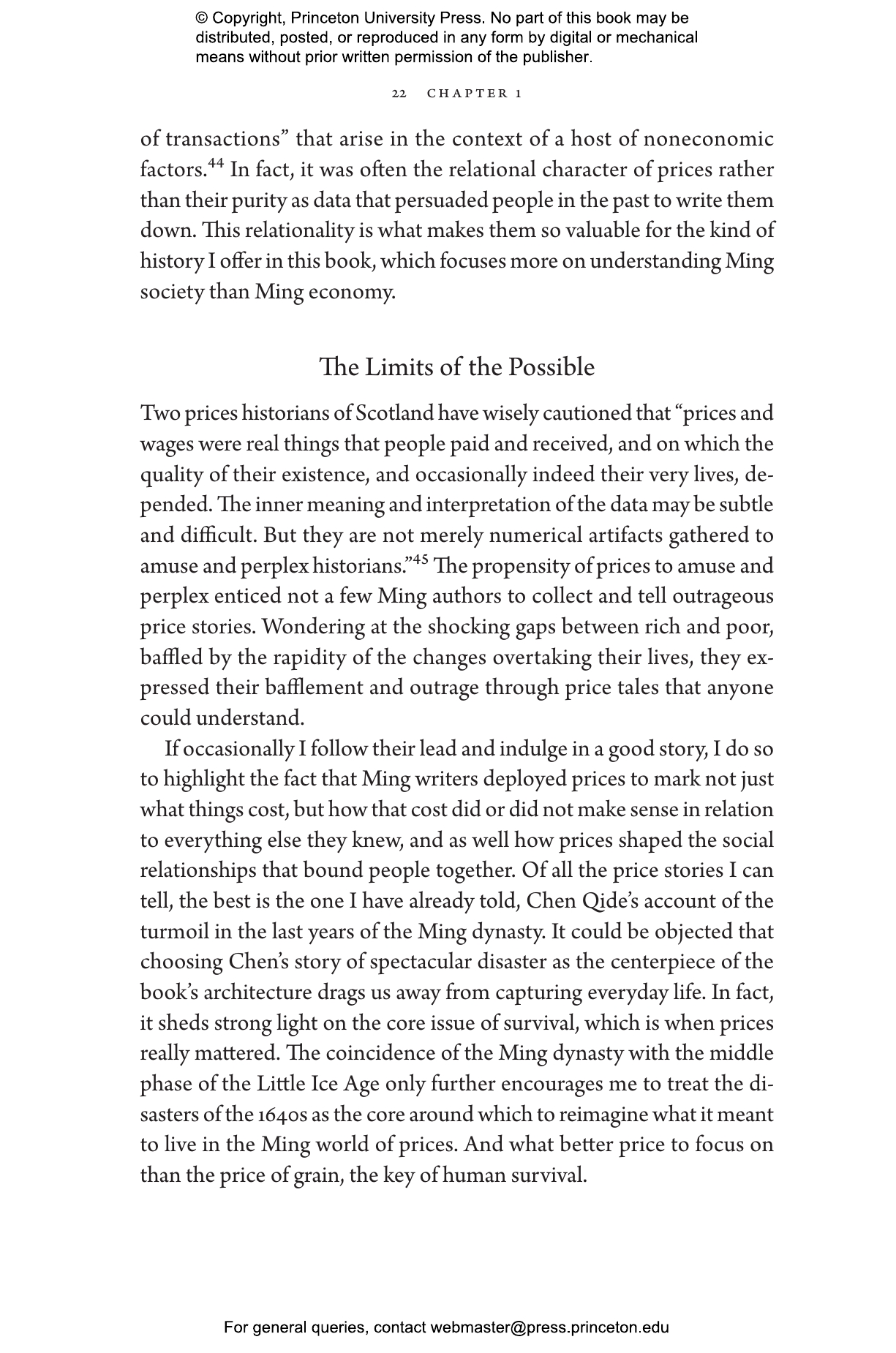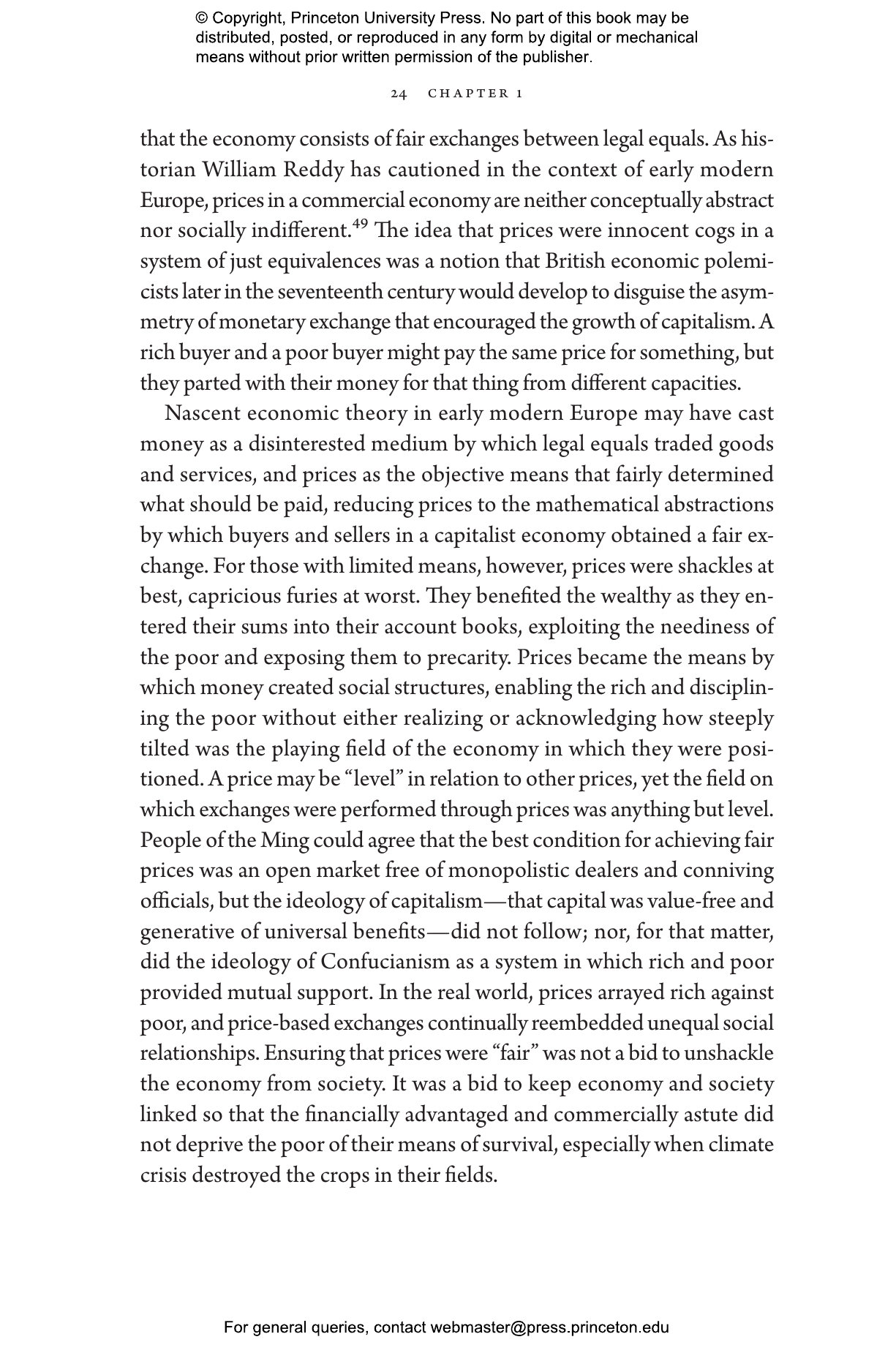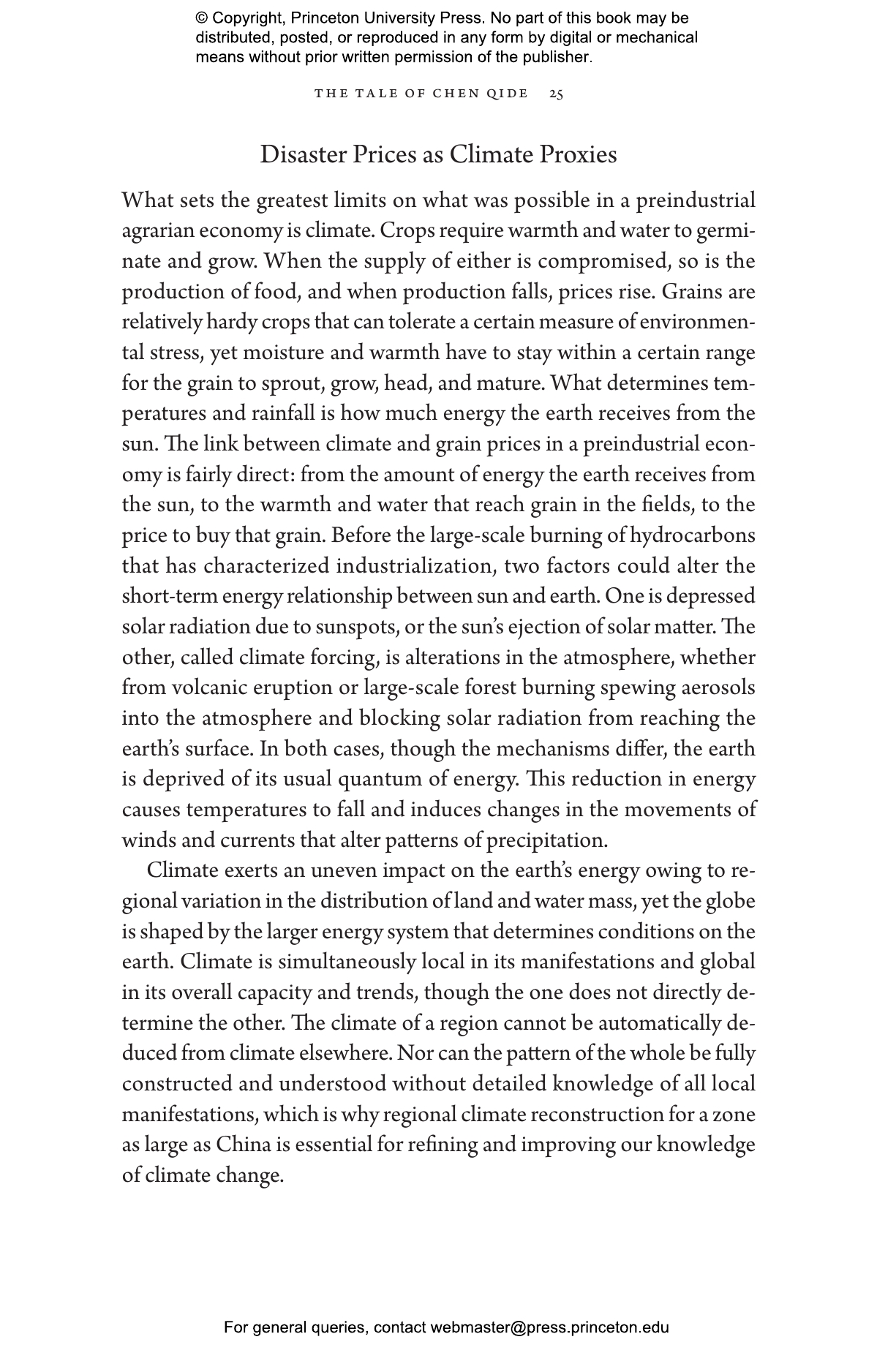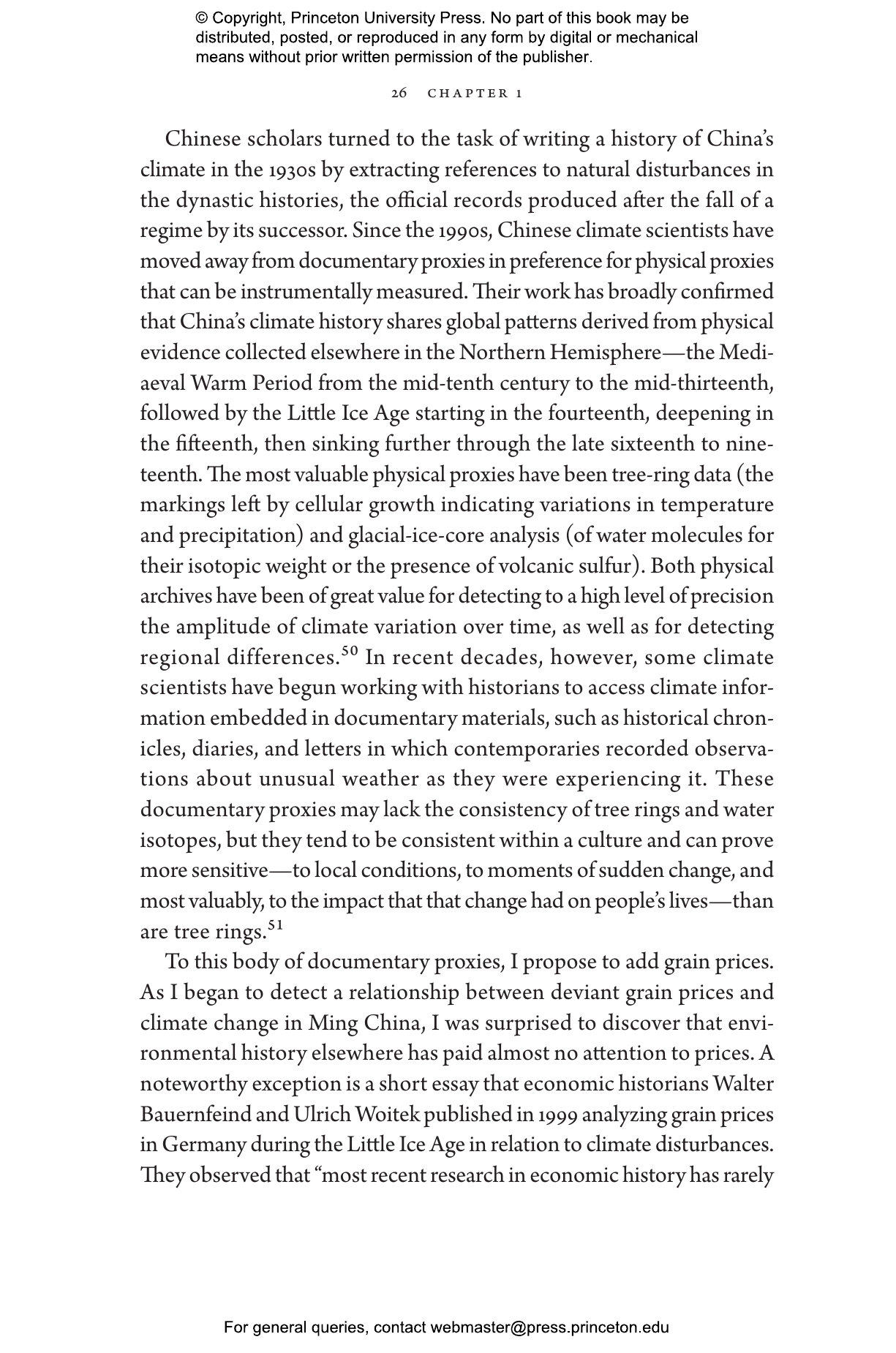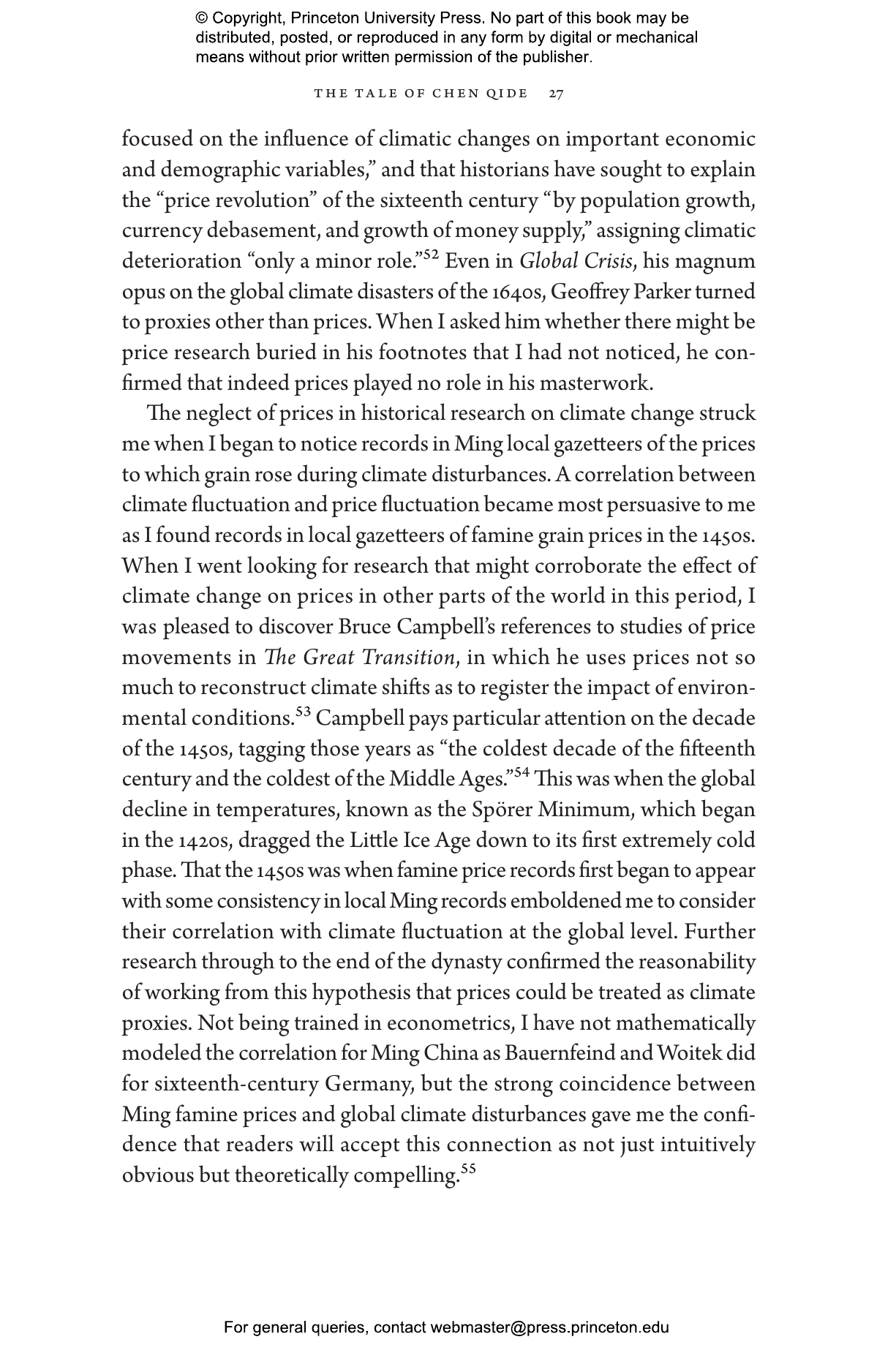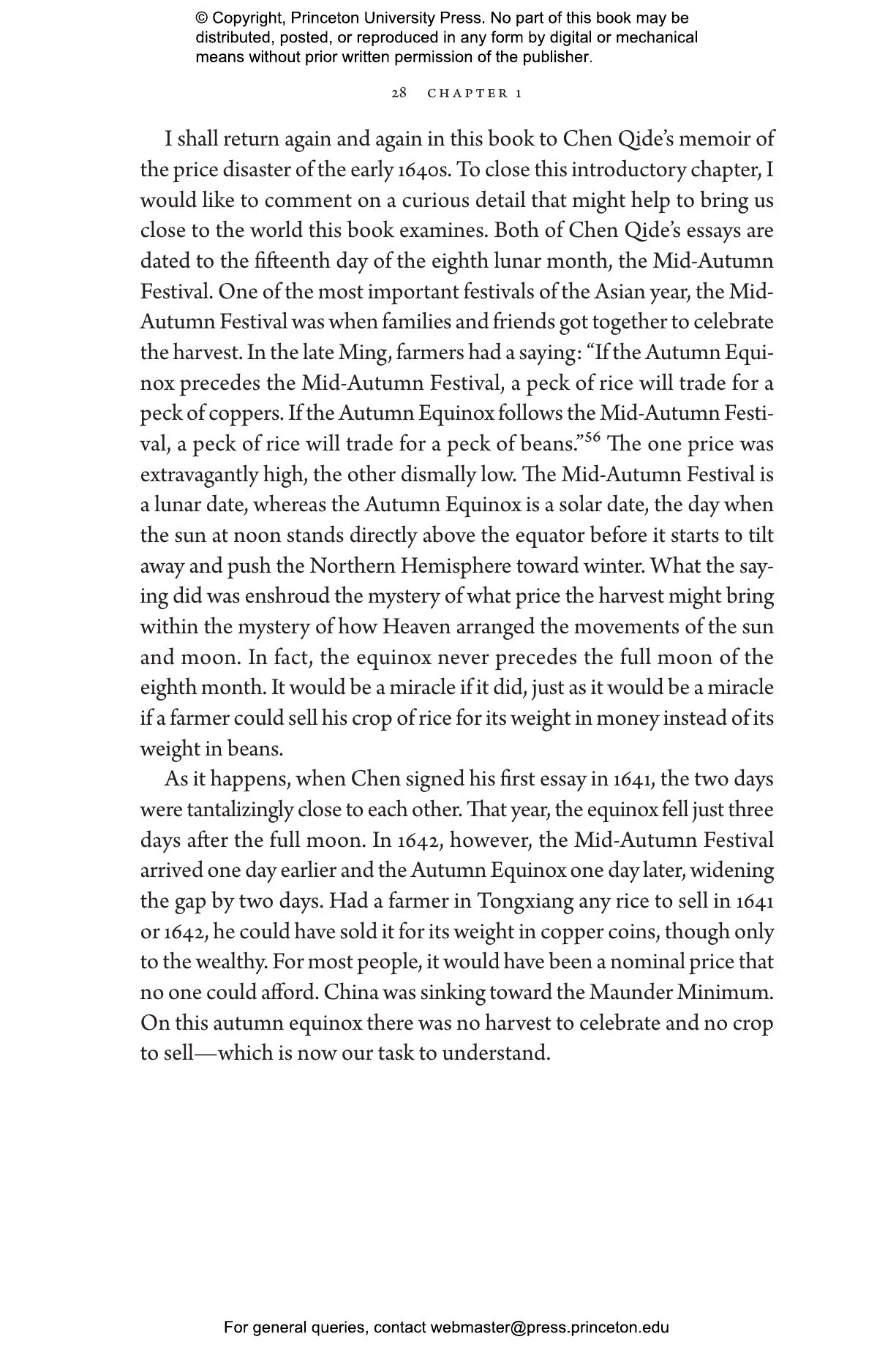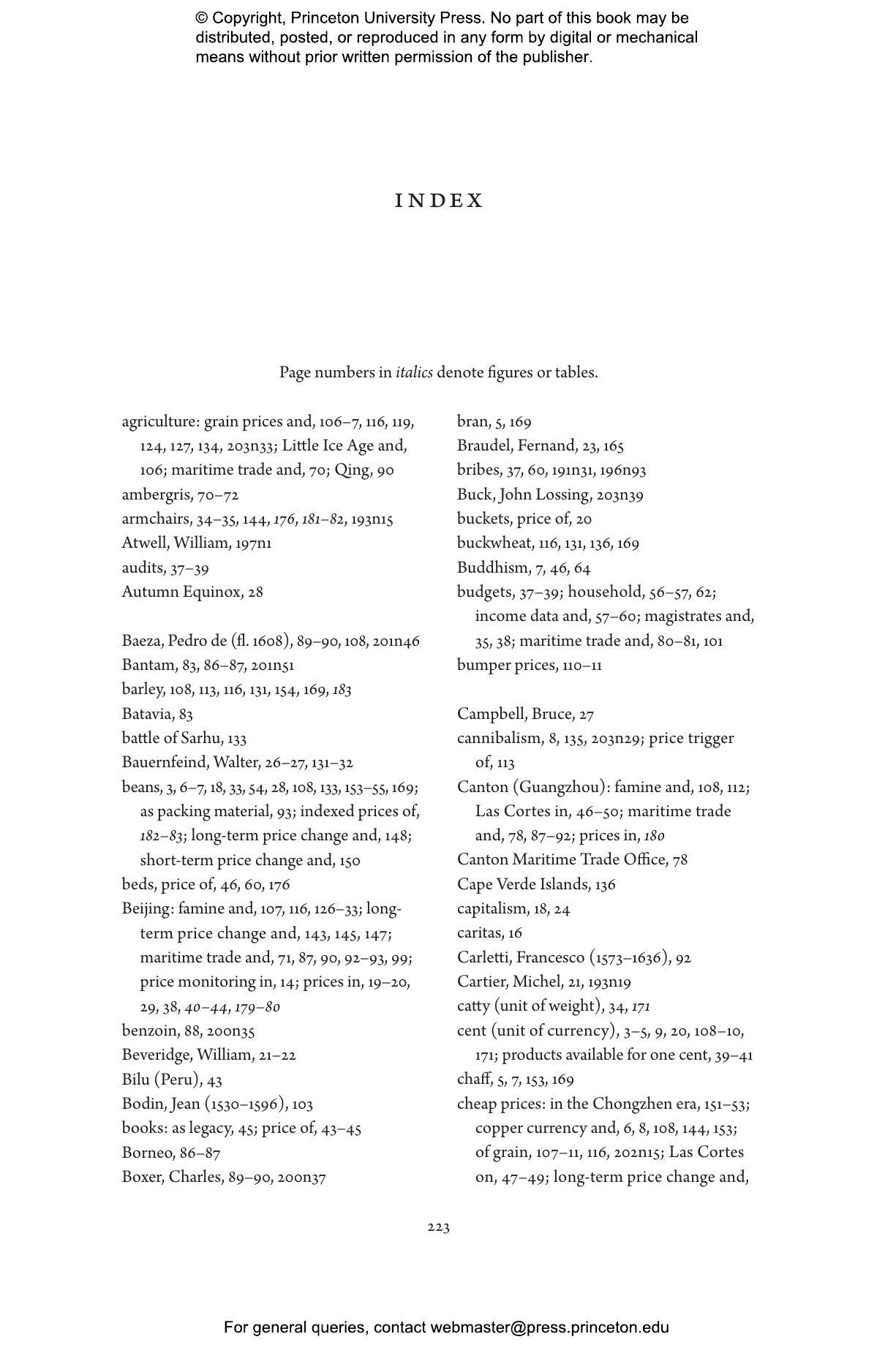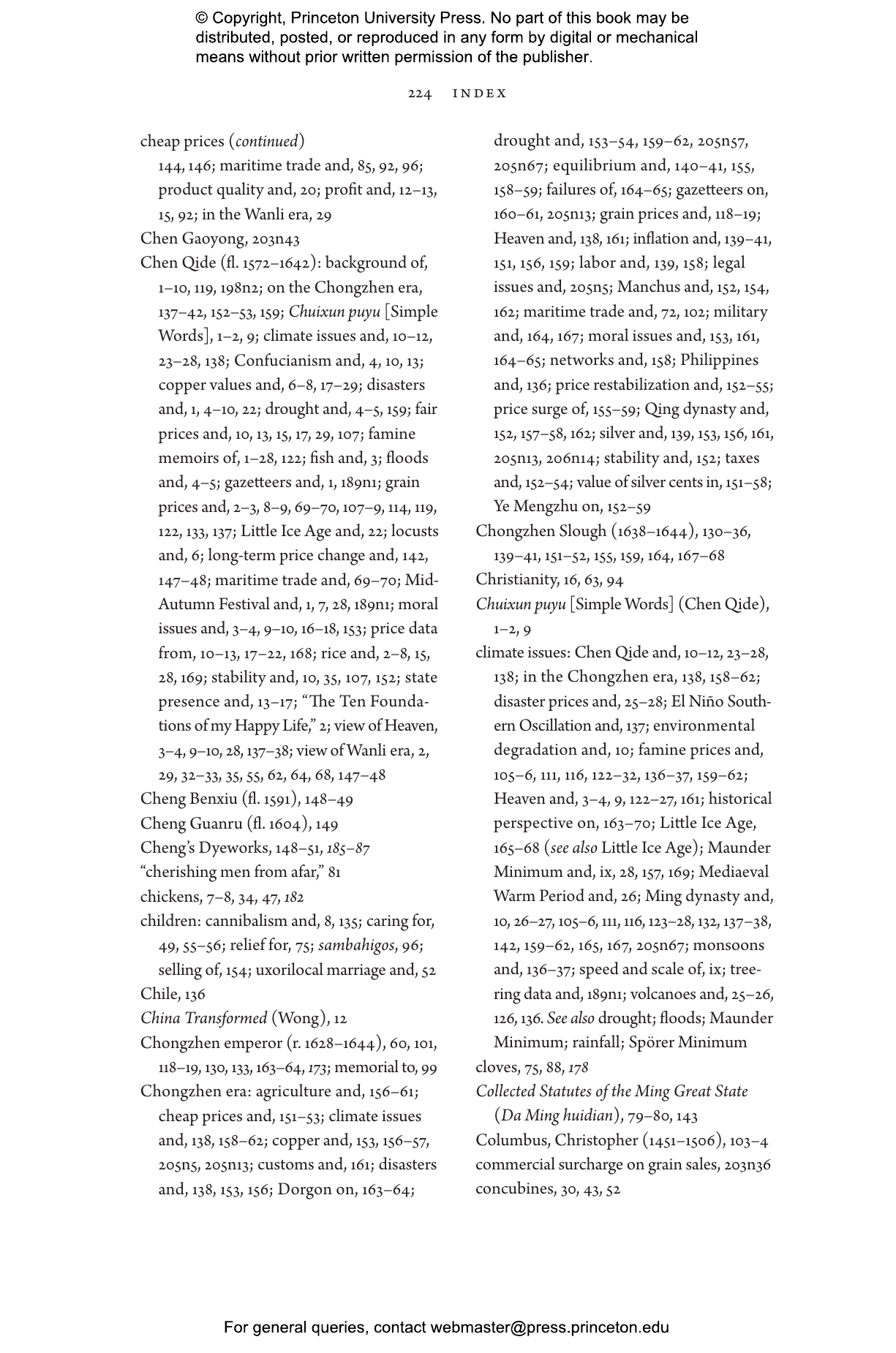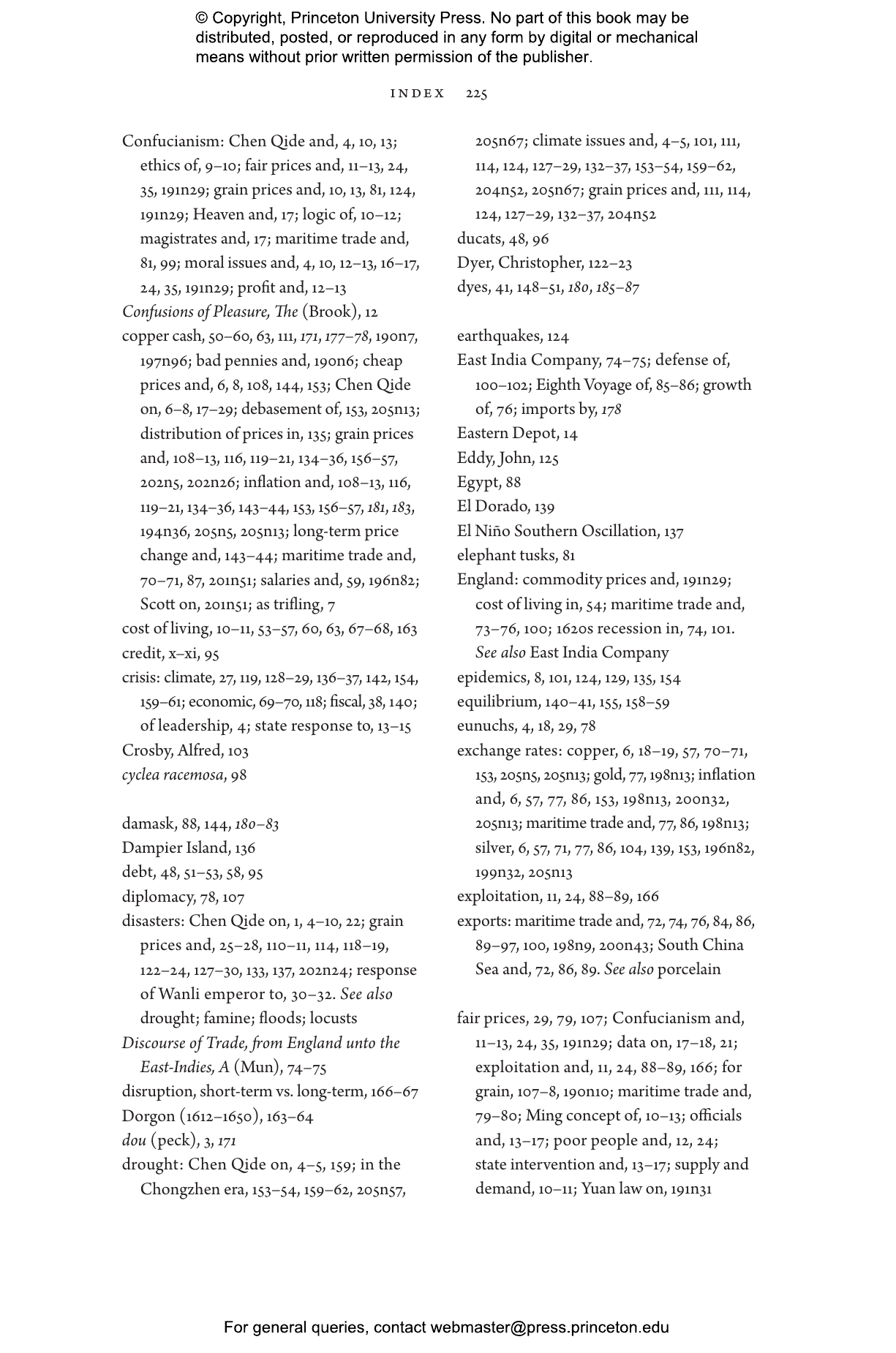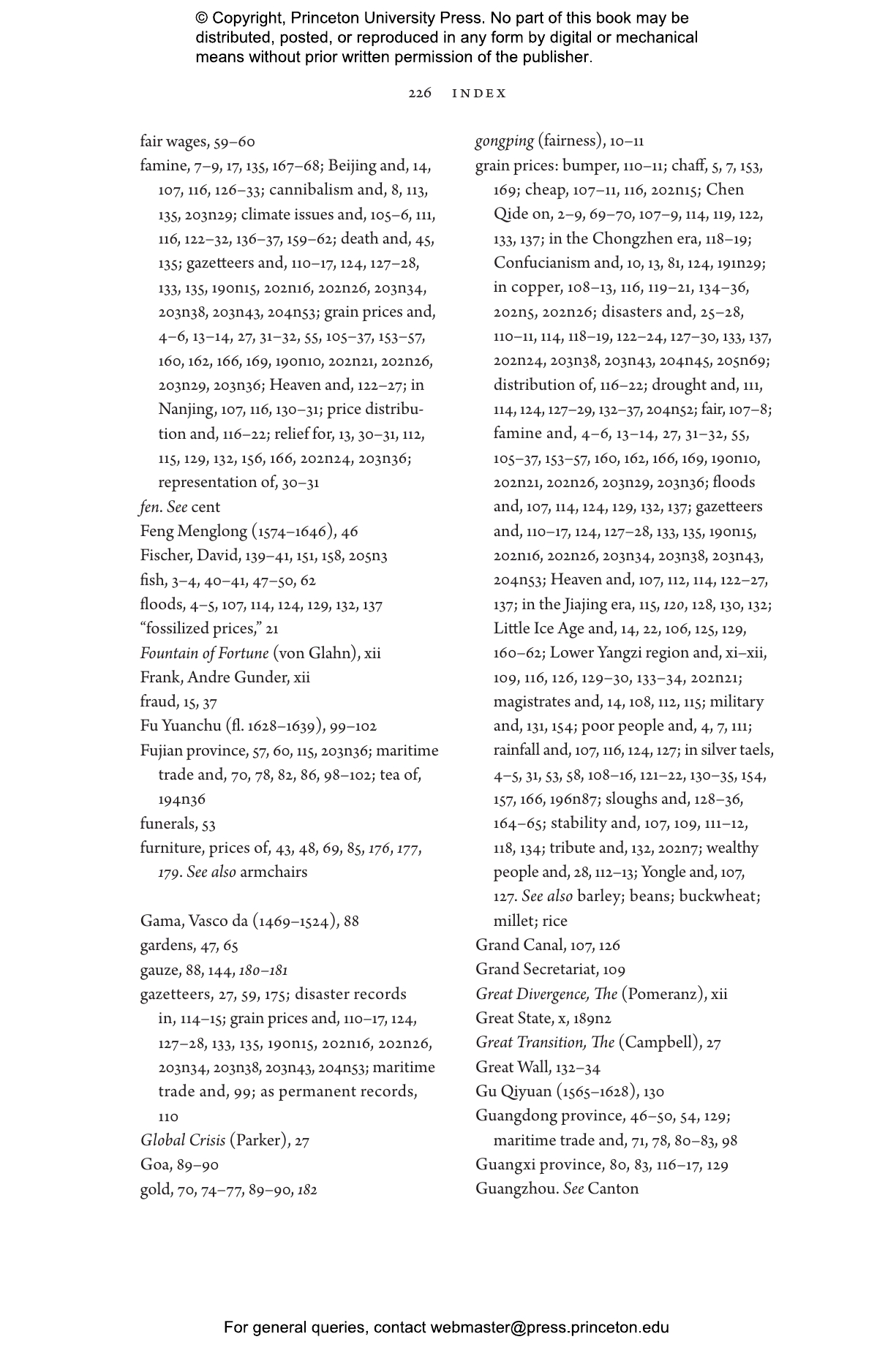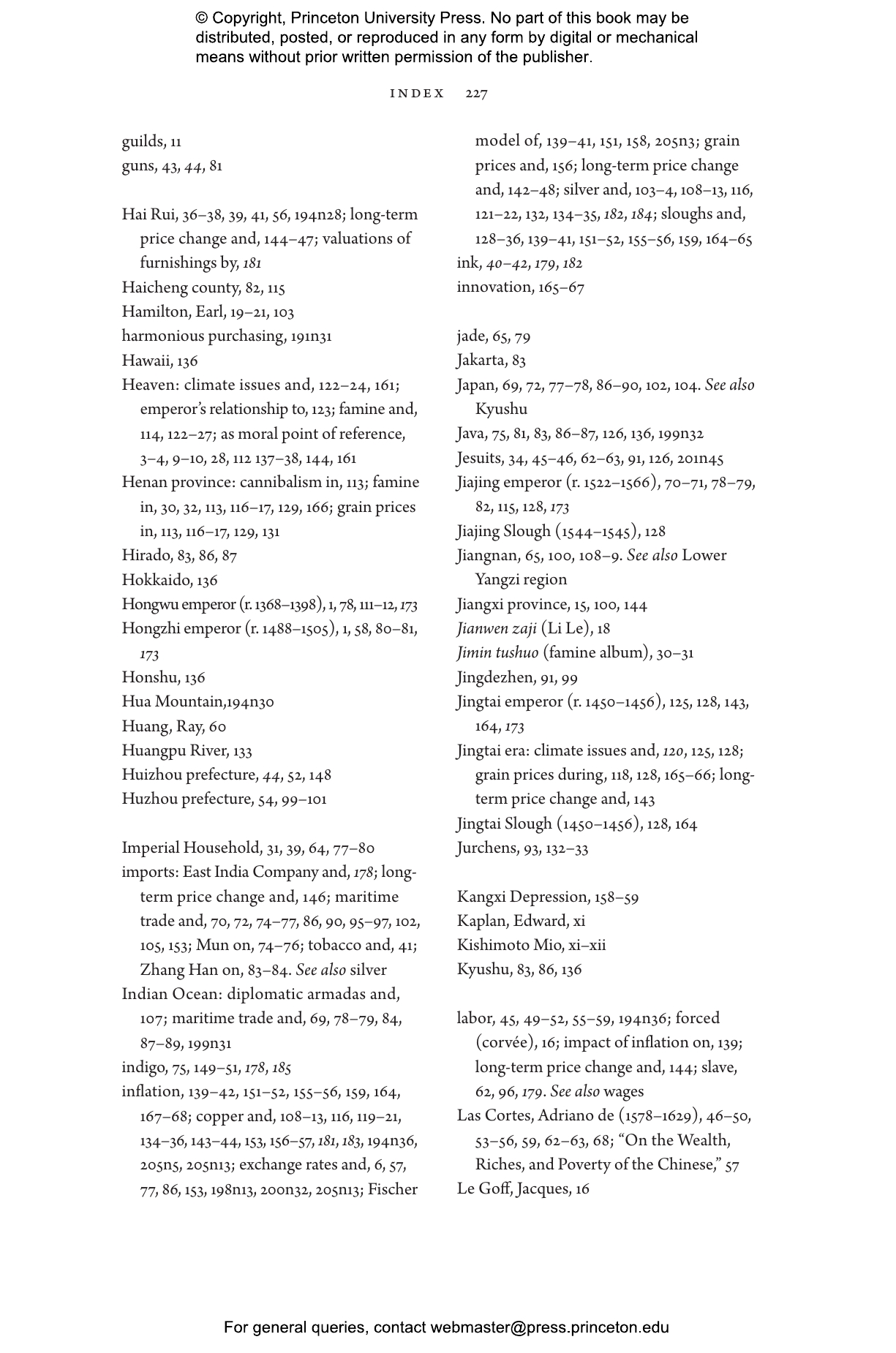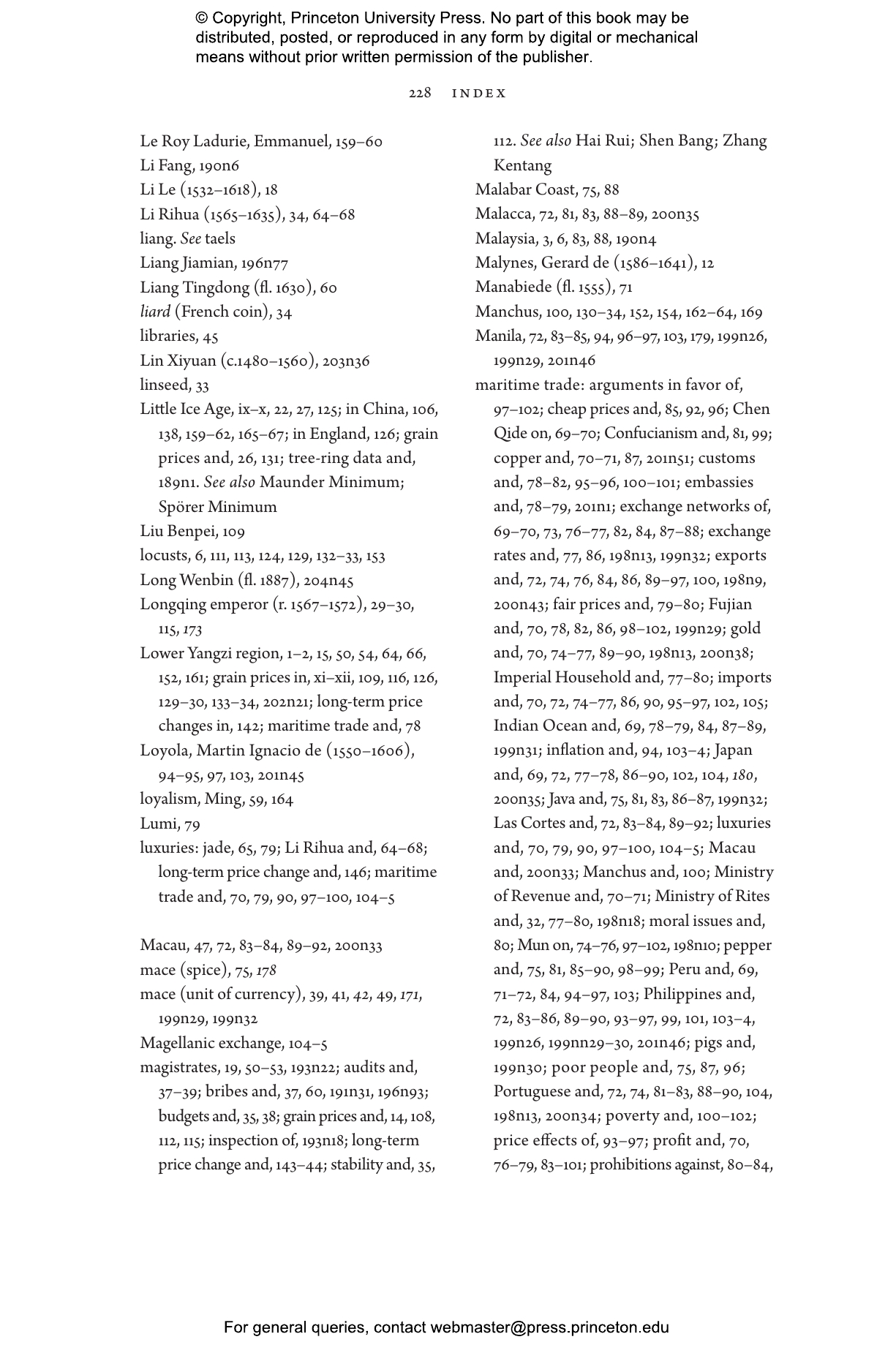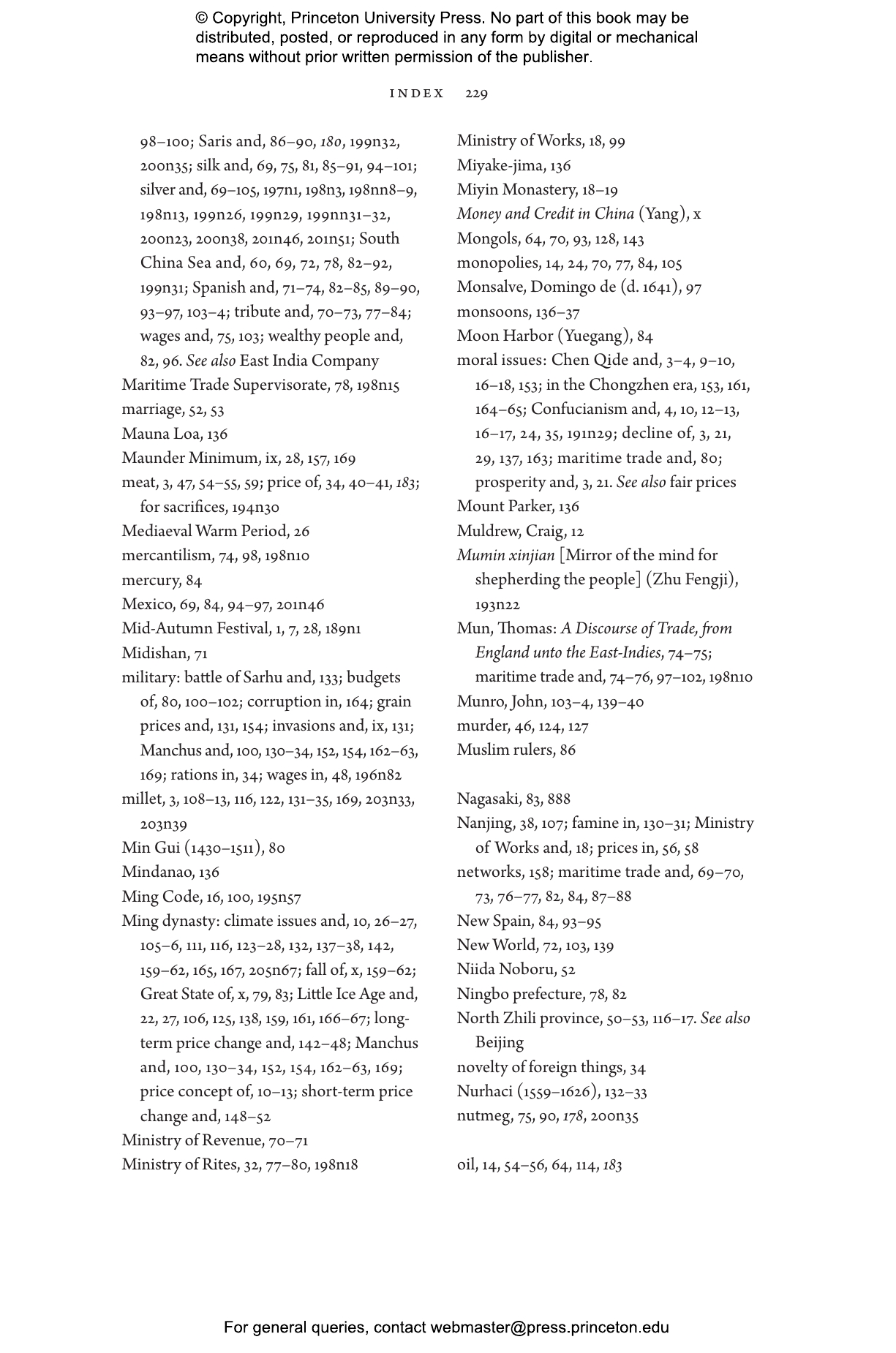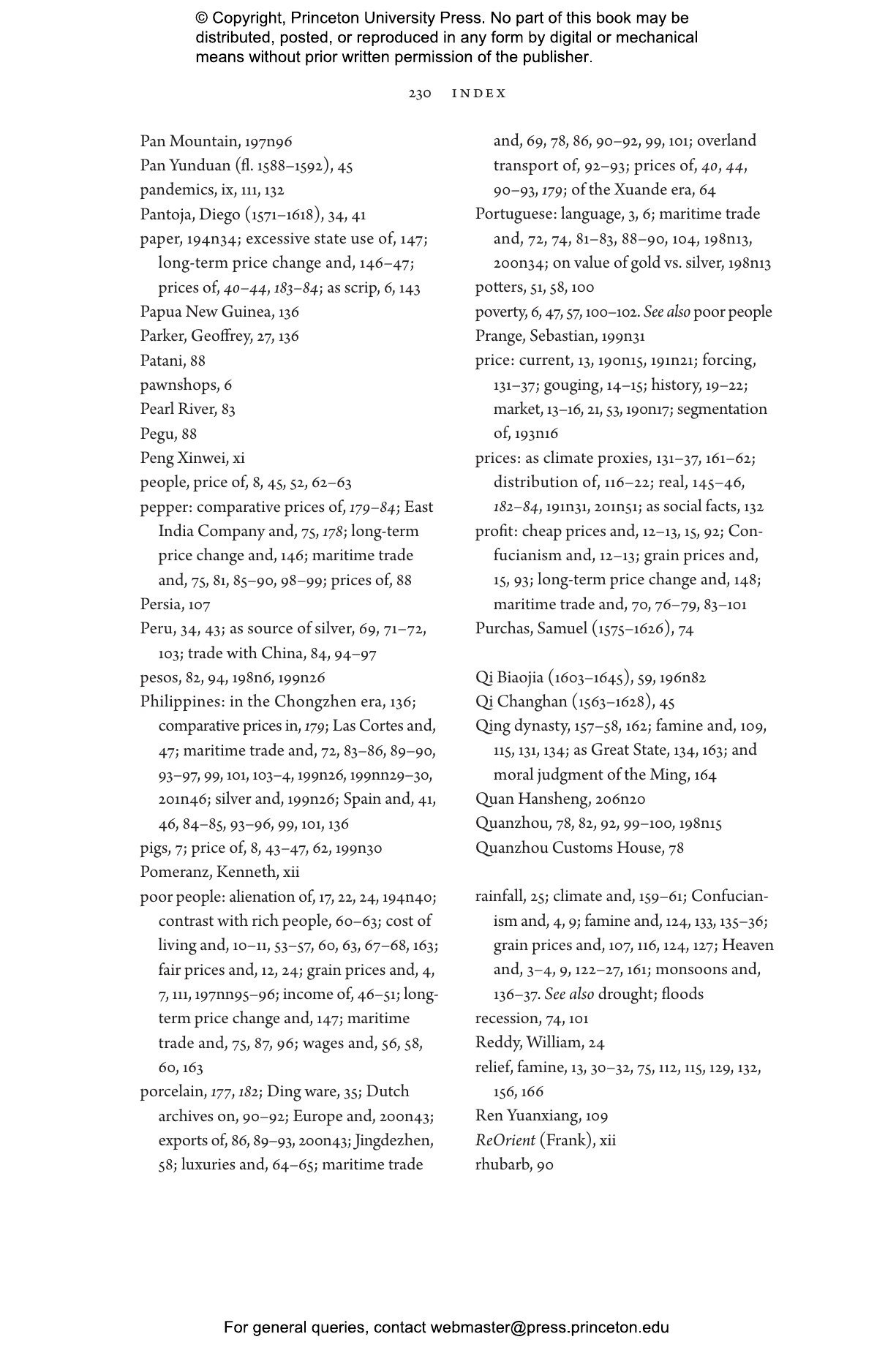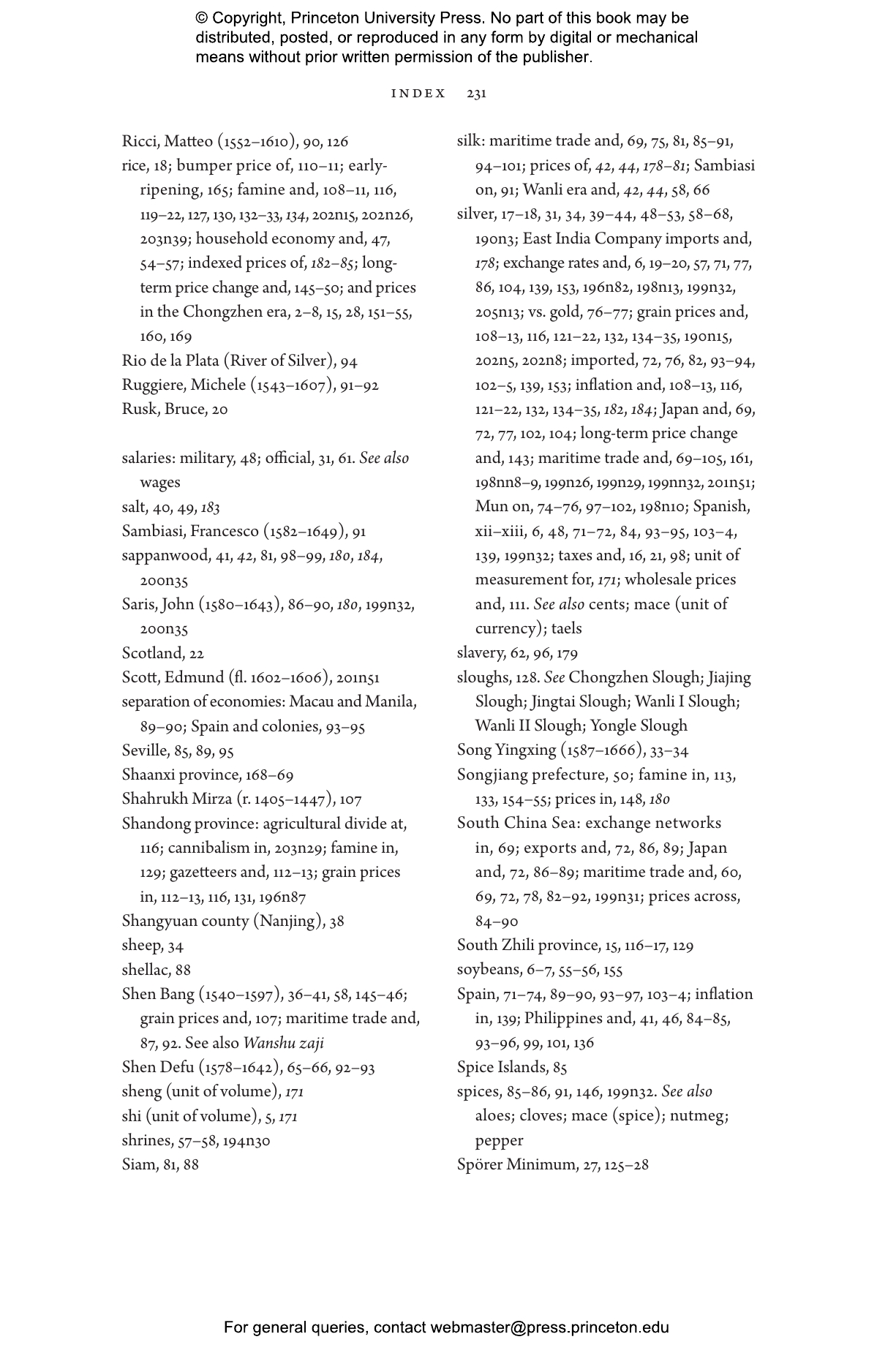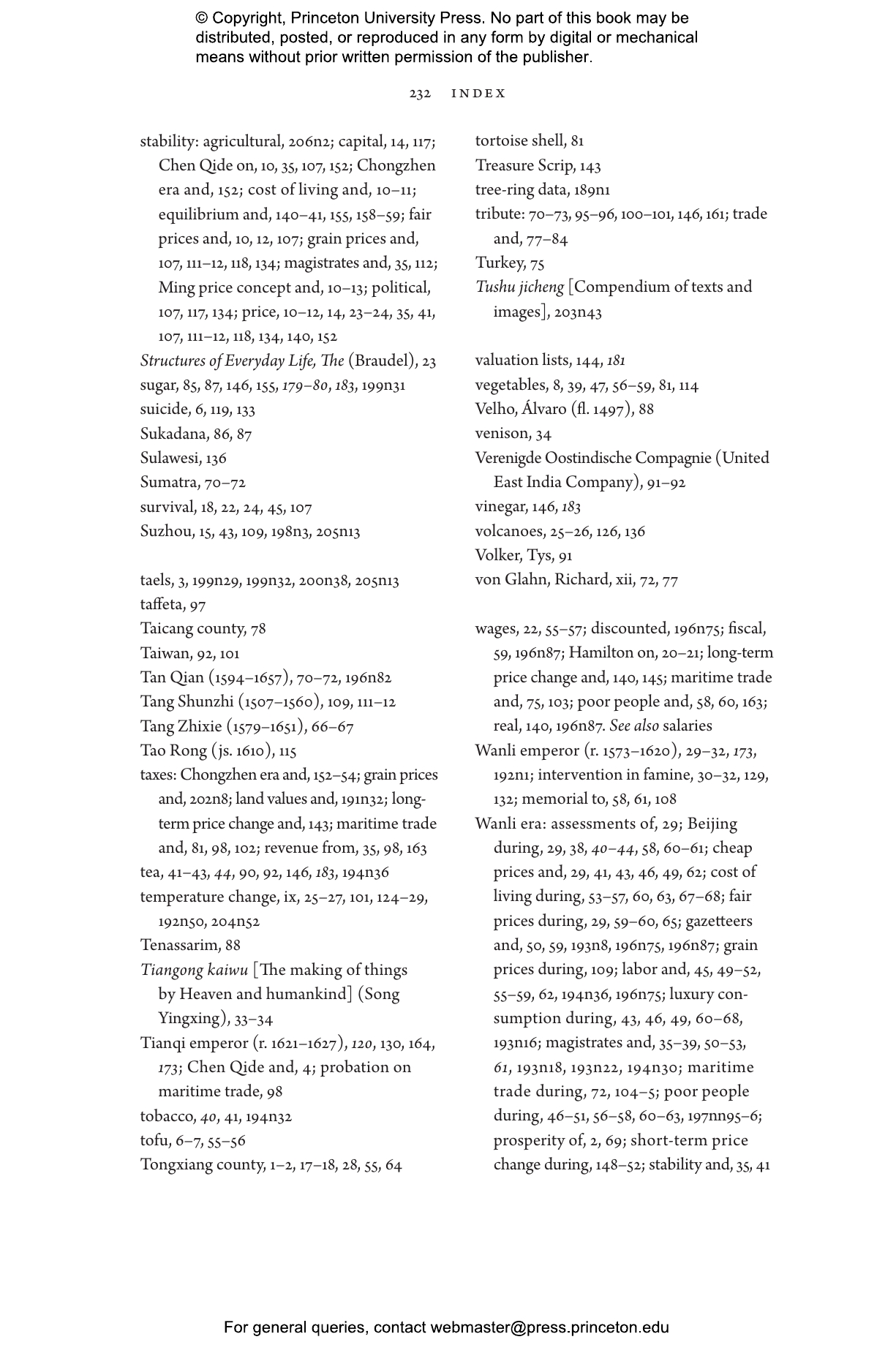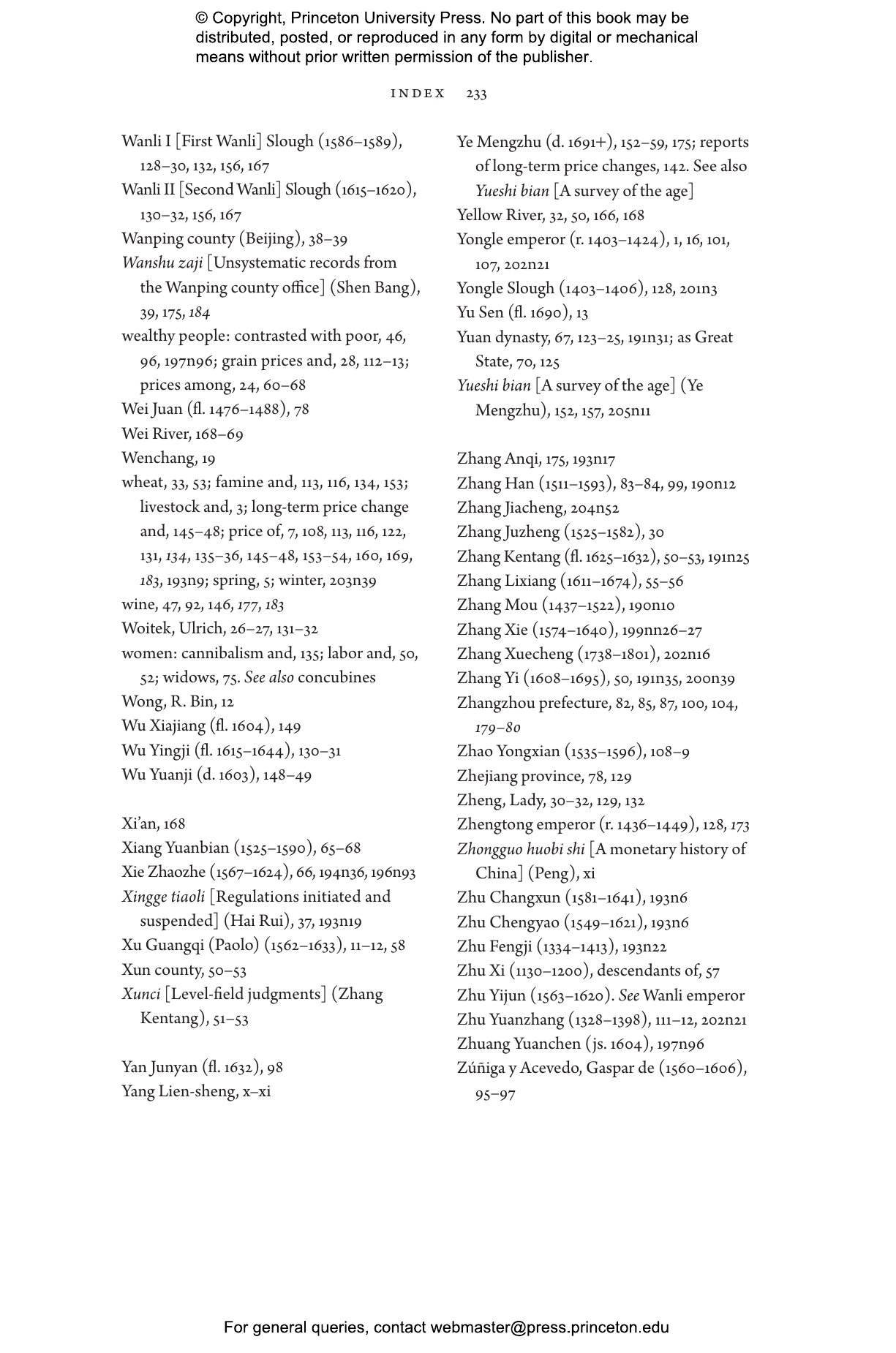In 1644, after close to three centuries of relative stability and prosperity, the Ming dynasty collapsed. Many historians attribute its demise to the Manchu invasion of China, but the truth is far more profound. The Price of Collapse provides an entirely new approach to the economic and social history of China, exploring how global climate crisis spelled the end of Ming rule.
The mid-seventeenth century witnessed the deadliest phase of the Little Ice Age, when temperatures and rainfall plunged and world economies buckled. Timothy Brook draws on the history of grain prices to paint a gripping portrait of the final tumultuous years of a once-great dynasty. He explores how global trade networks that increasingly moved silver into China may have affected prices and describes the daily struggle to survive amid grain shortages and famine. By the early 1640s, as the subjects of the Ming found themselves caught in a deadly combination of cold and drought that defied all attempts to stave off disaster, the Ming price regime collapsed, and with it the Ming political regime.
A masterful work of scholarship, The Price of Collapse reconstructs the experience of ordinary people under the immense pressure of unaffordable prices as their country slid from prosperity to calamity and shows how the market mediated the relationship between an empire and the climate that turned against it.
Timothy Brook is professor emeritus of history at the University of British Columbia and a fellow of the British Academy. His many books include Great State, Mr. Selden’s Map of China, and Vermeer’s Hat.
"The Price of Collapse is a little gem."—Rana Mitter, Literary Review
"The subject of Timothy Brook’s book, the demise of the Ming dynasty, offers a chilling warning of a cost-of-living crisis driven by climate-induced food precarity."—Peter Coates, Times Literary Supplement
"The Price of Collapse is an exemplary work on a well-researched topic—the fall of Ming China—from a set of unique perspectives, such as price history and the history of climate. . . . This is an inspiring extended reading of the author’s award-winning book The Confusions of Pleasure, helping readers fully understand the rise and fall of Ming China, once the center of global trade, through a new lens. . . . Highly recommended."—Choice Reviews
"Fascinating."—David Lorimer, Paradigm Explorer
“This rich and original integration of price history and the history of climate, vividly written and argued with great verve, deserves the attention of all historians of the Ming, indeed of anyone interested in the ways societies react to crises that threaten their stability and very existence. The breadth and imagination of Timothy Brook’s scholarship, with the very stuff of the Ming at its center, make this book a compelling instance of a global history with urgent contemporary resonances.”—Craig Clunas, author of Chinese Painting and Its Audiences
“Chinese grain prices prove to be a powerful documentary proxy to situate the end-of-Ming crises into the global climate history of the Little Ice Age. Twenty-five years since his The Confusions of Pleasure reoriented Ming China’s commerce as the center of global trade, Timothy Brook’s The Price of Collapse centers famine grain prices as the best index to explain why the Ming fell when it did. All fall-of-the-Ming narratives must now include climate change and now all global climate historians can draw from China’s experience.”—Marta E. Hanson, independent scholar at the Max Planck Institute for the History of Science
“In this deeply researched volume, Timothy Brook delves into the history of prices of ordinary things that affected ordinary lives in Ming China. The result is the clearest and most careful argument yet that the chill and drought of the Little Ice Age overwhelmed the dynasty’s capacity to forestall famine and prevent its own political demise.”—J. R. McNeill, Georgetown University
“The Price of Collapse is history at its best: detailed, insightful, multivocal, and marvelously told in a gripping and compelling manner. Timothy Brook eloquently shows how to work closely with sources and analyze local history with a view to global concerns.”—Dagmar Schäfer, executive director of the Max Planck Institute for the History of Science
